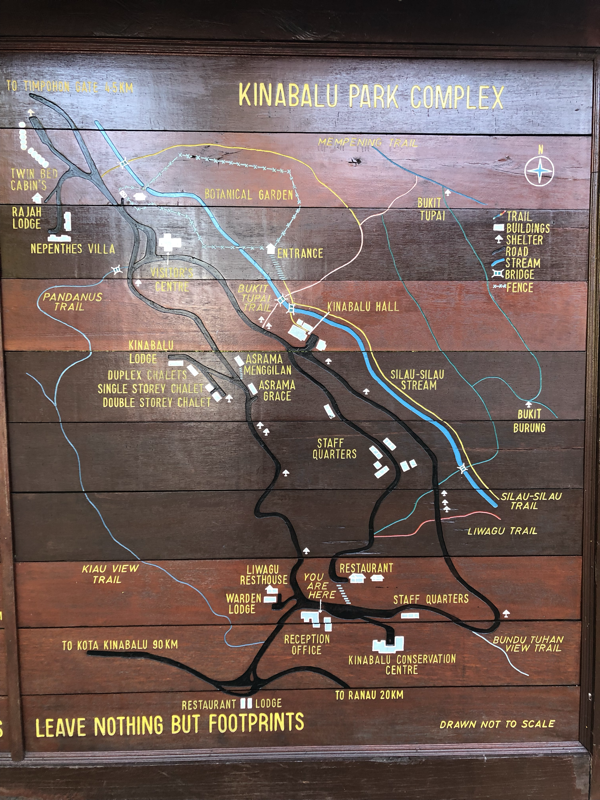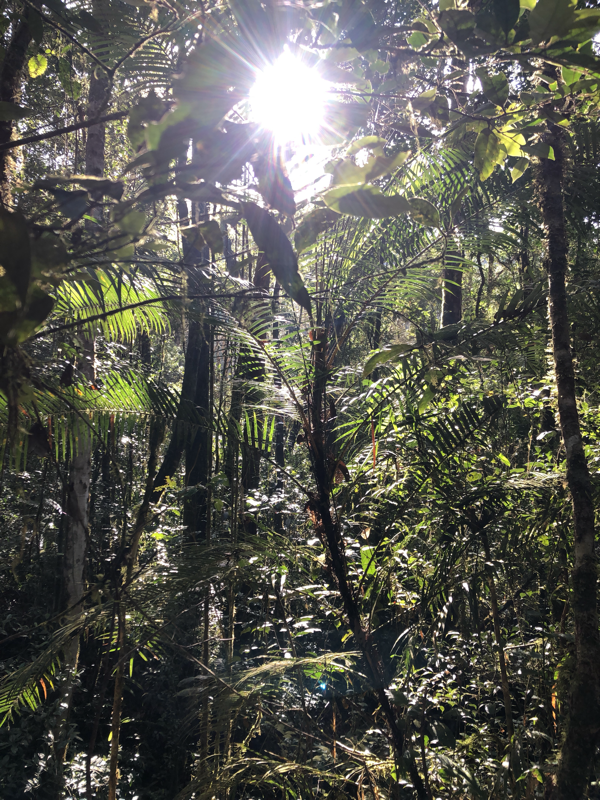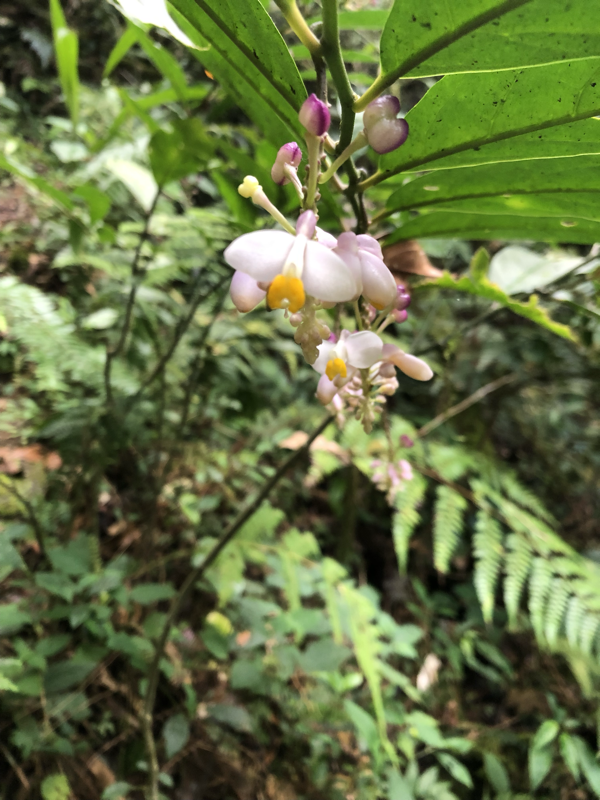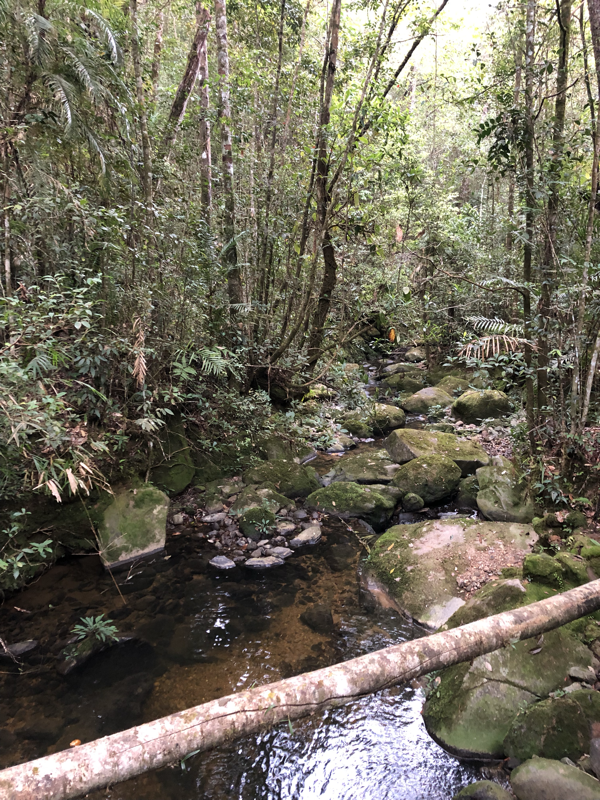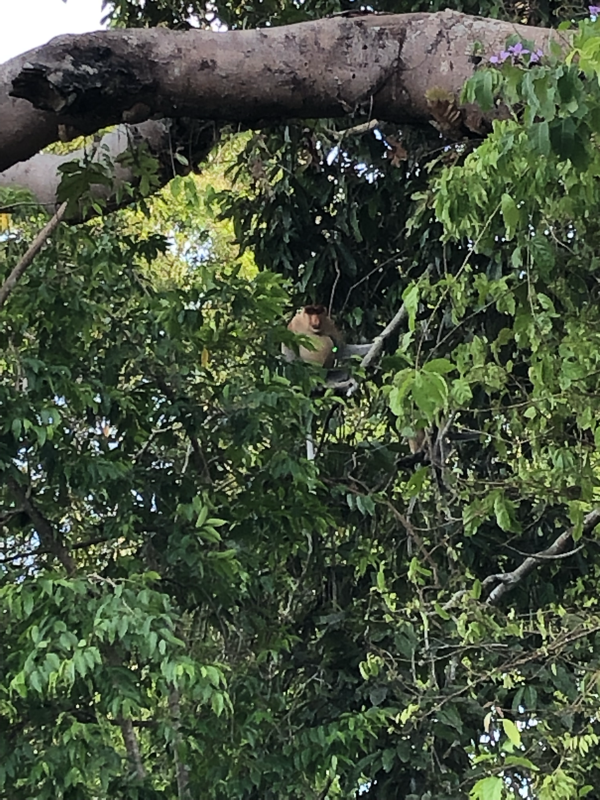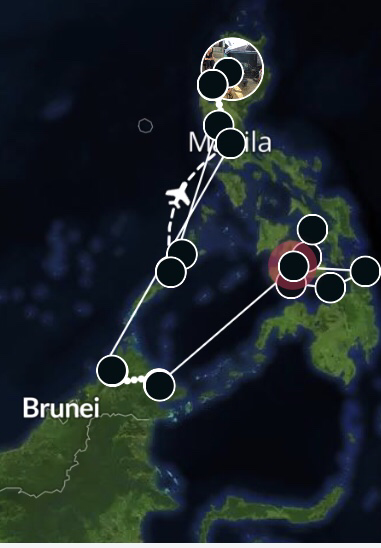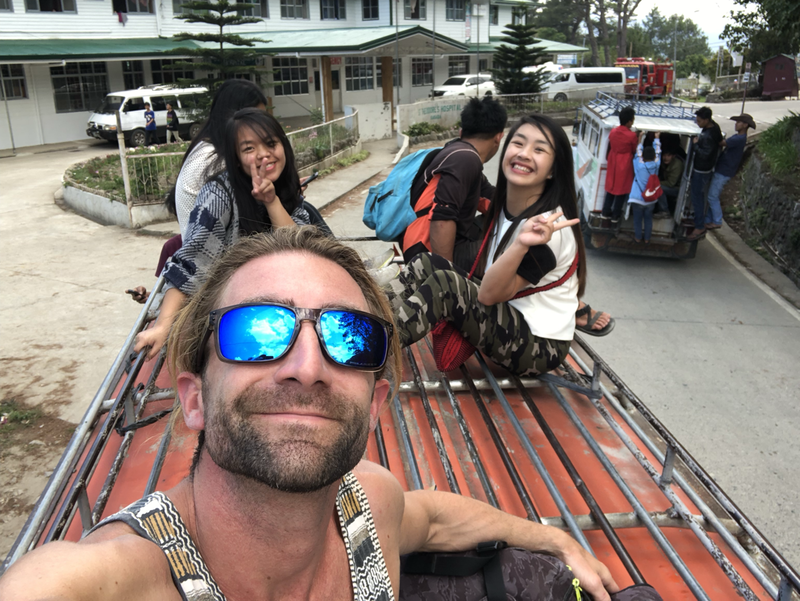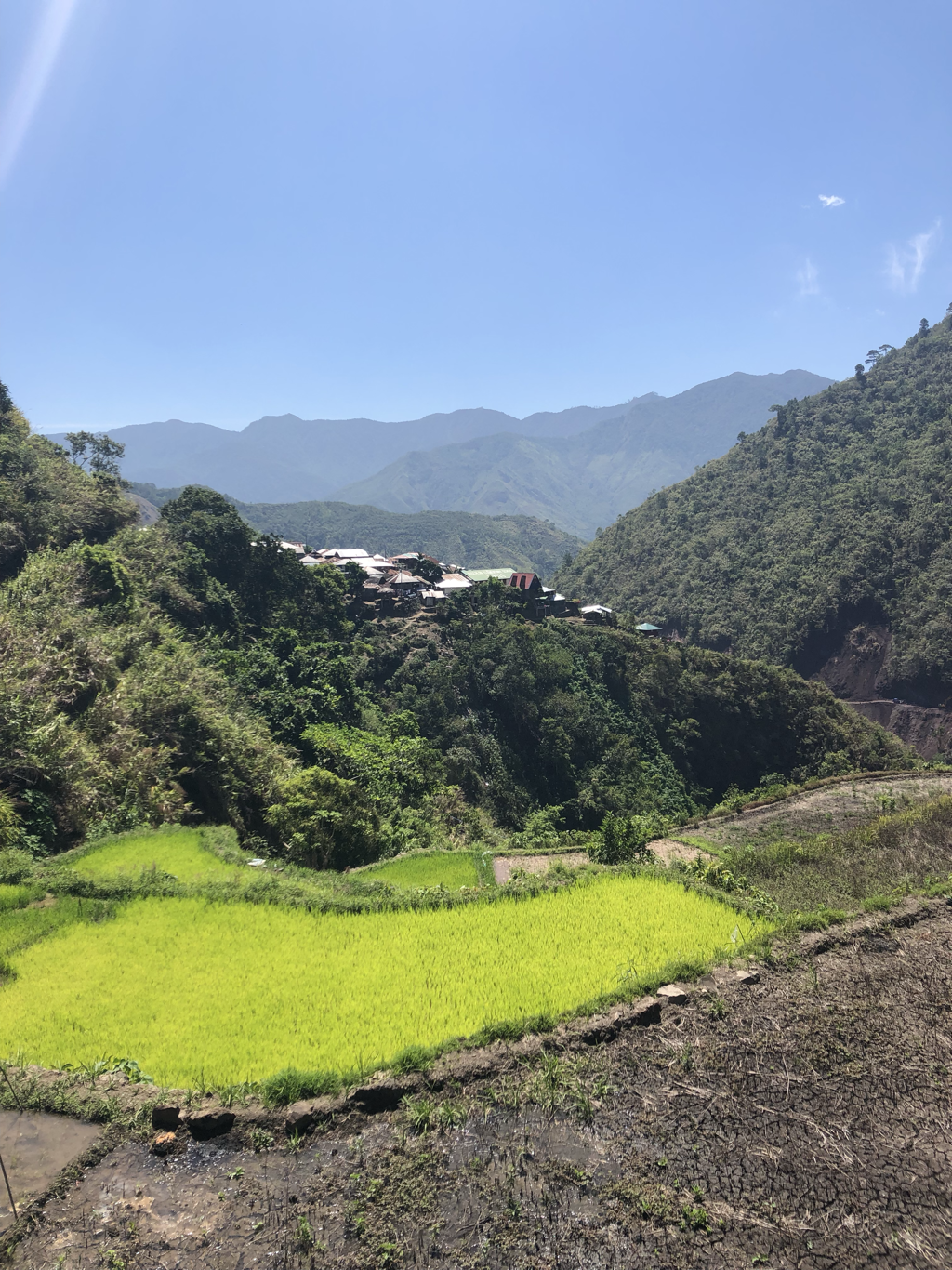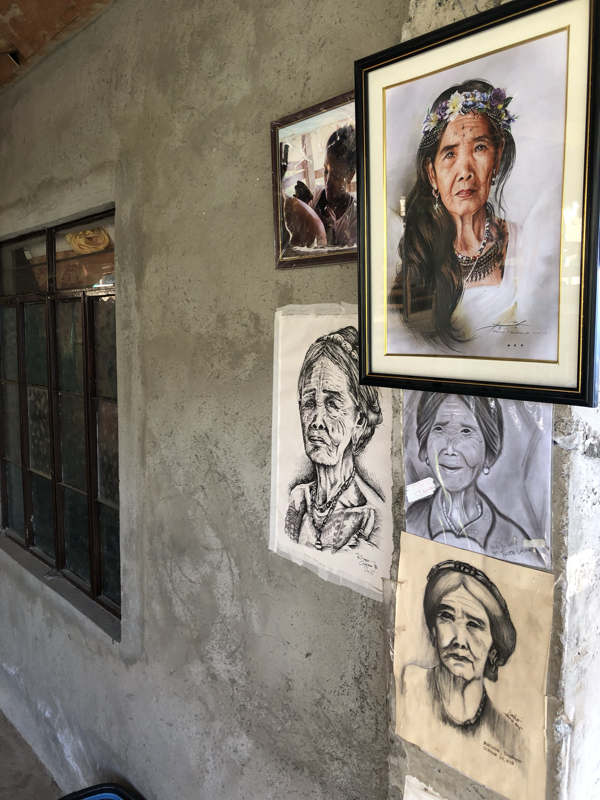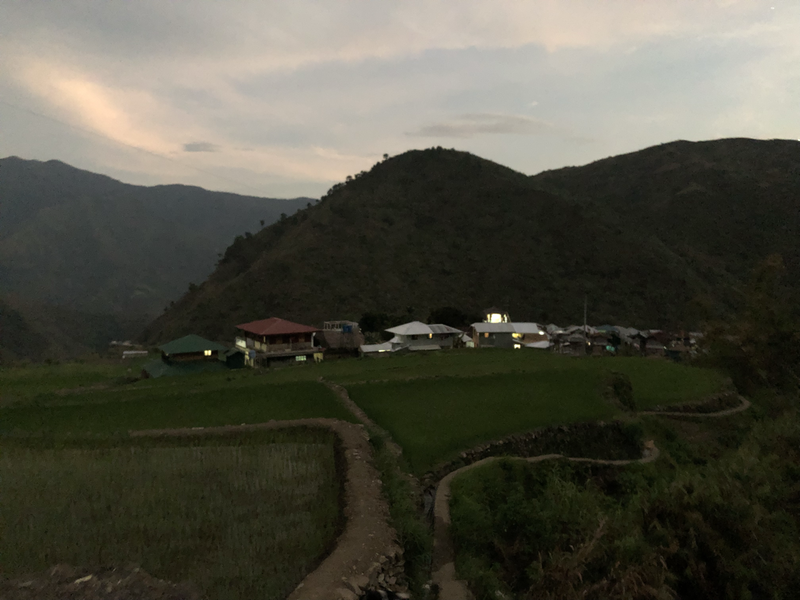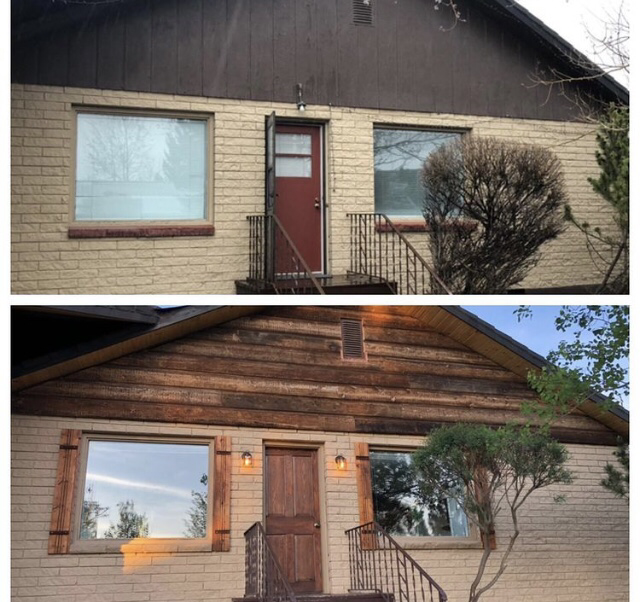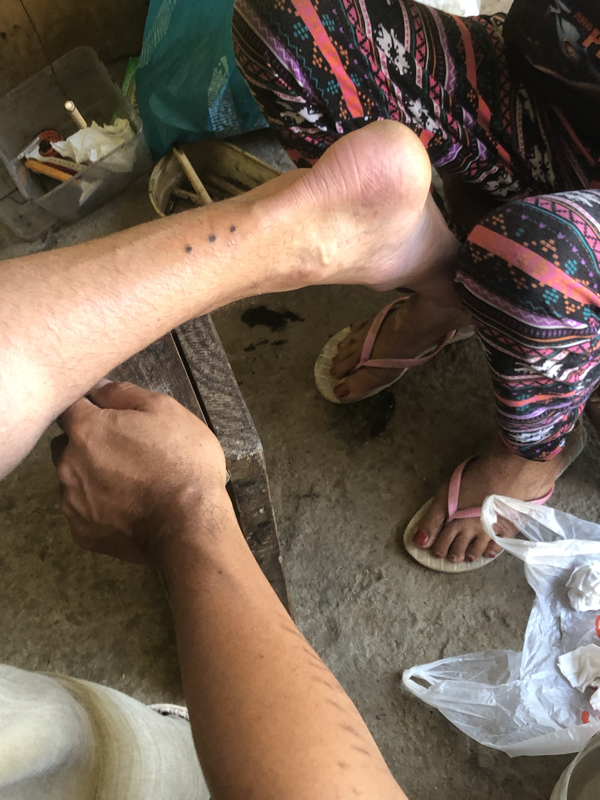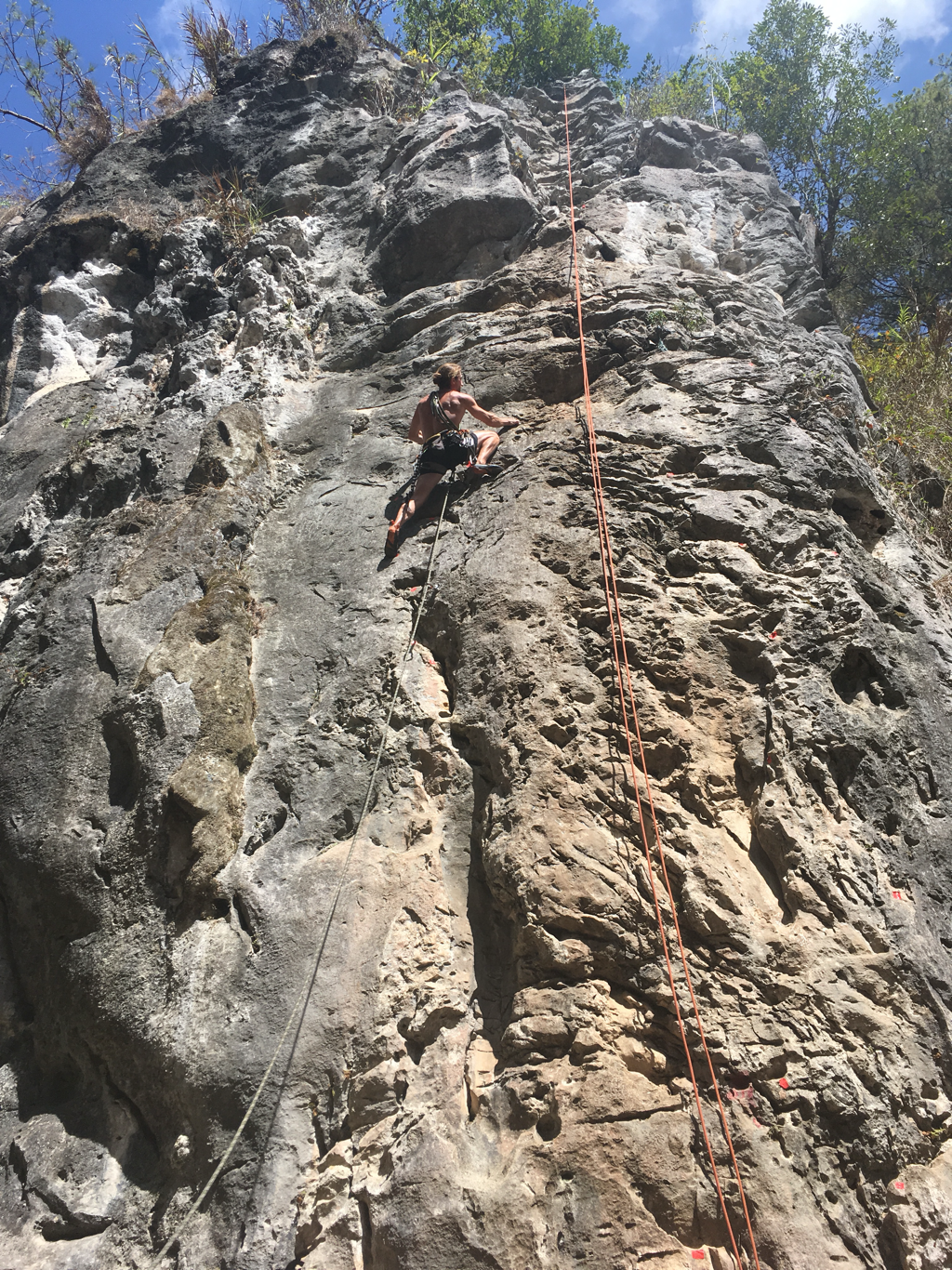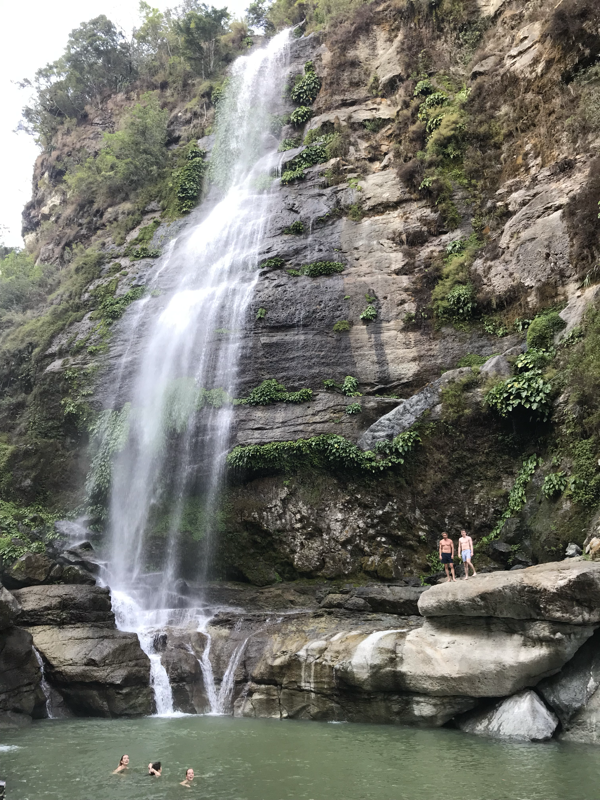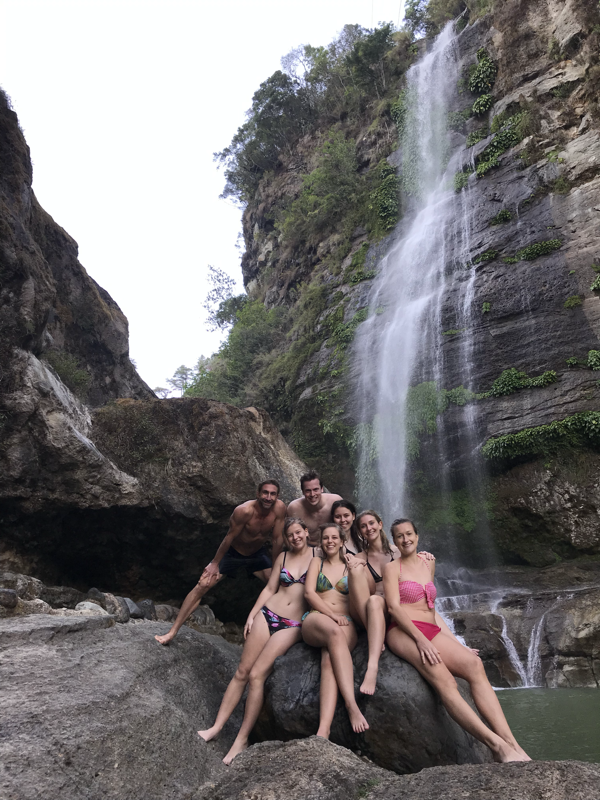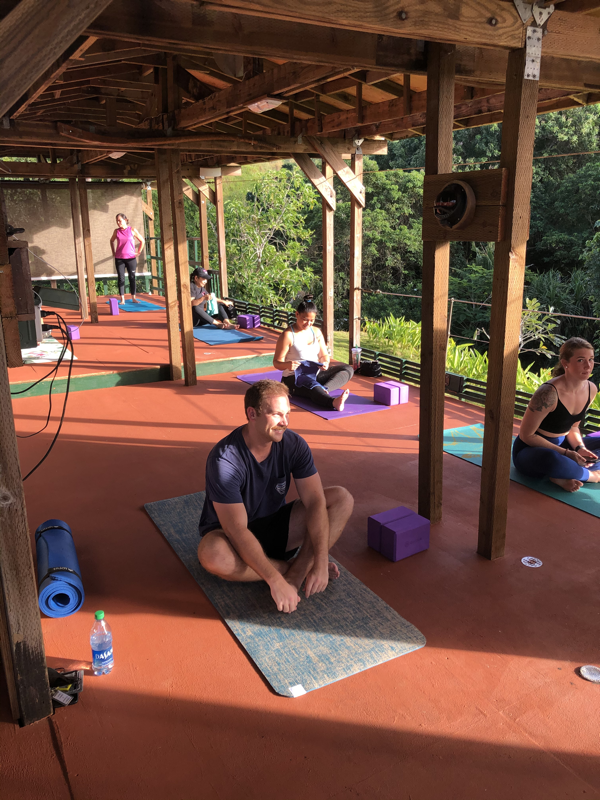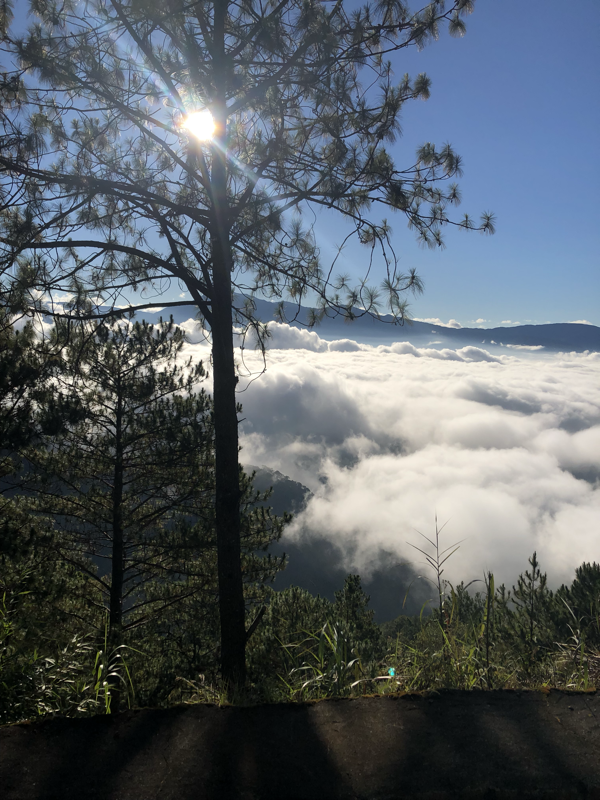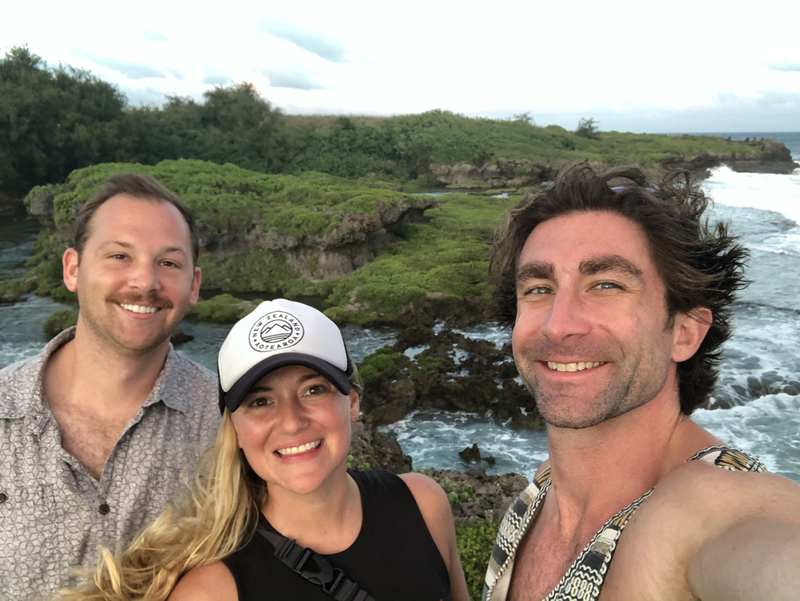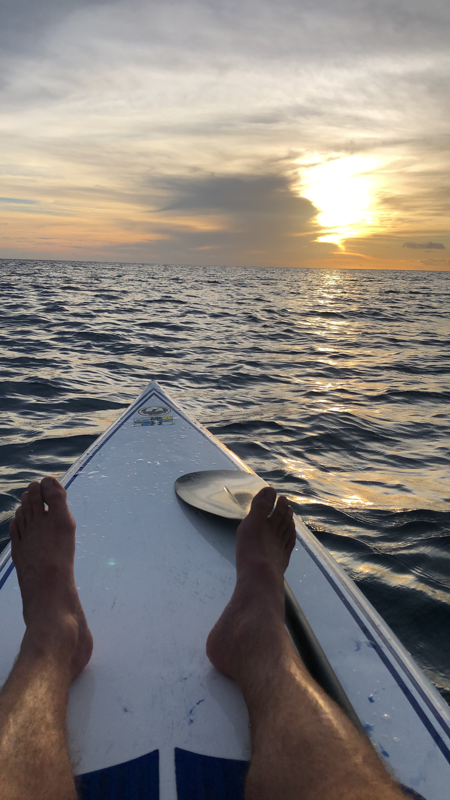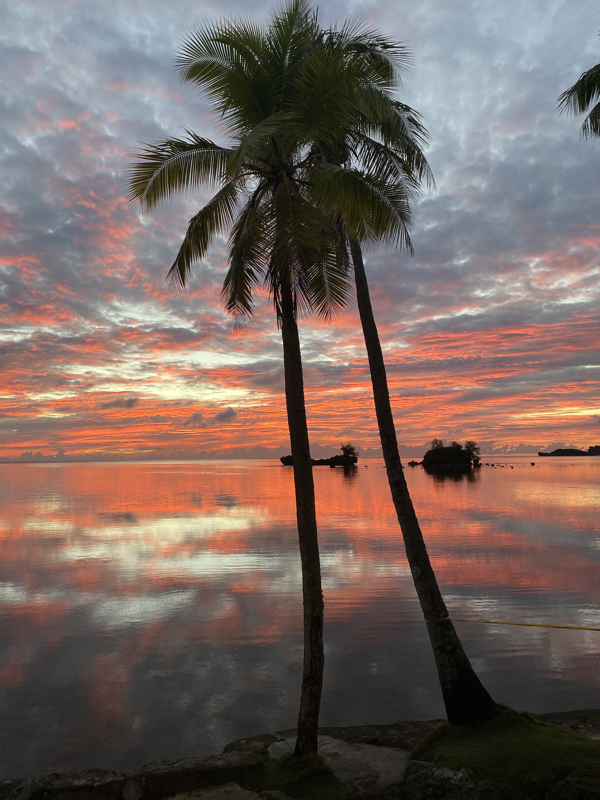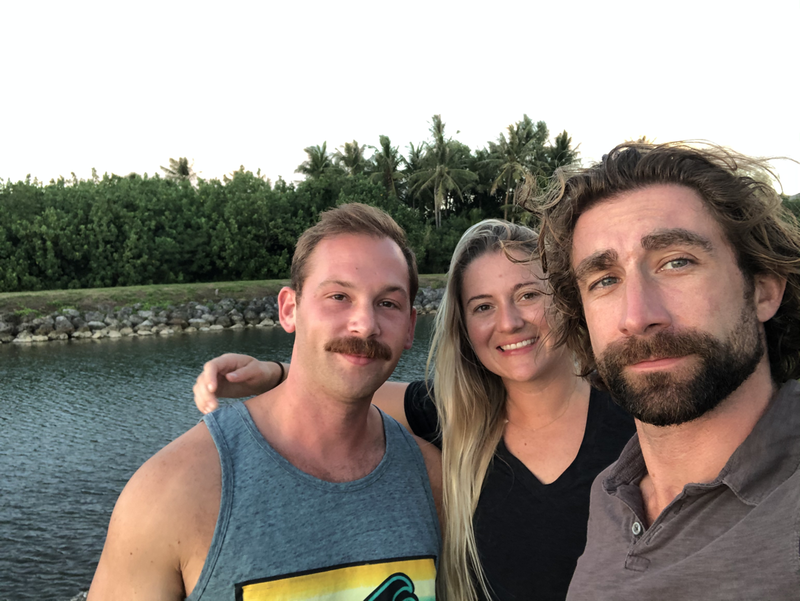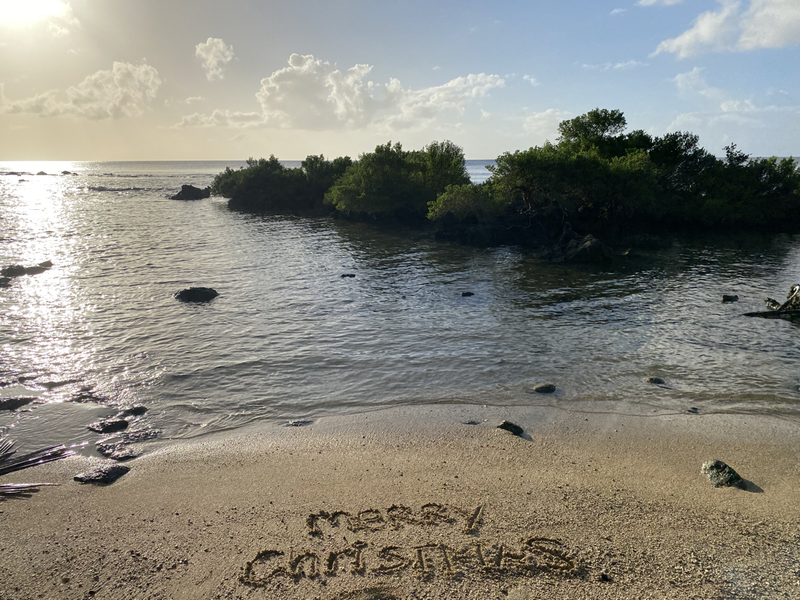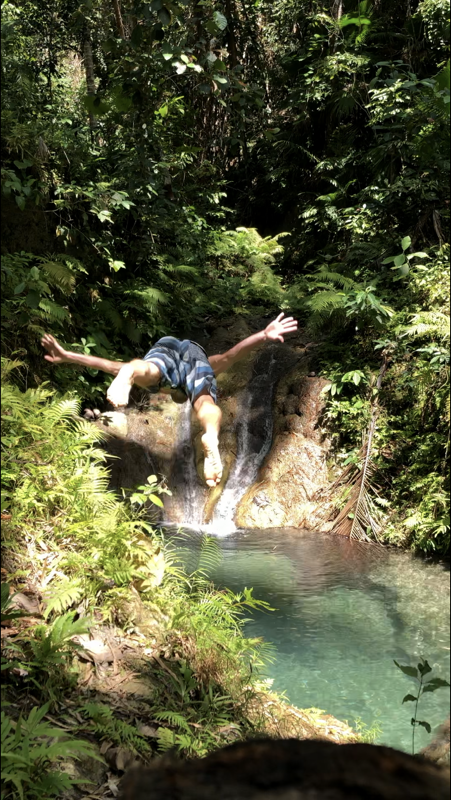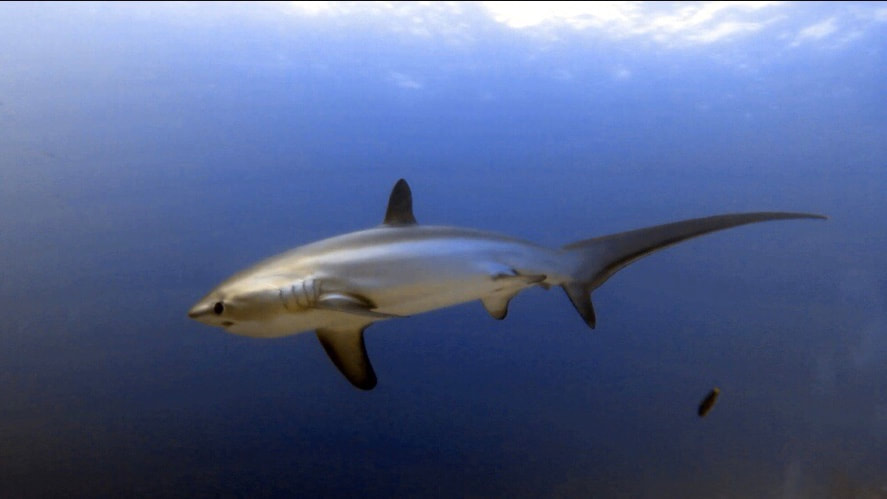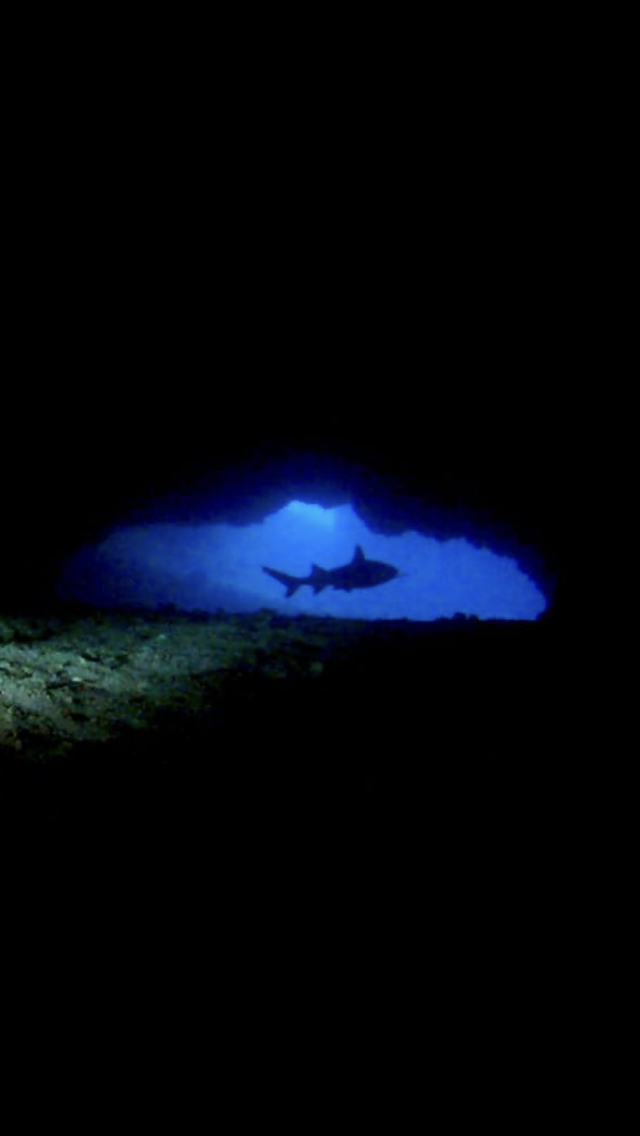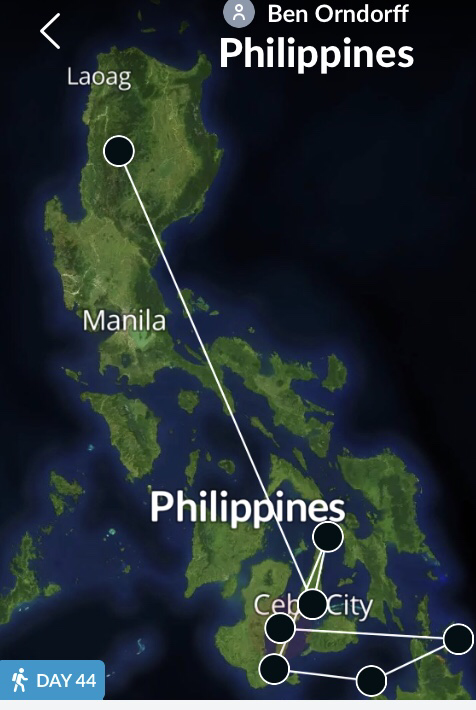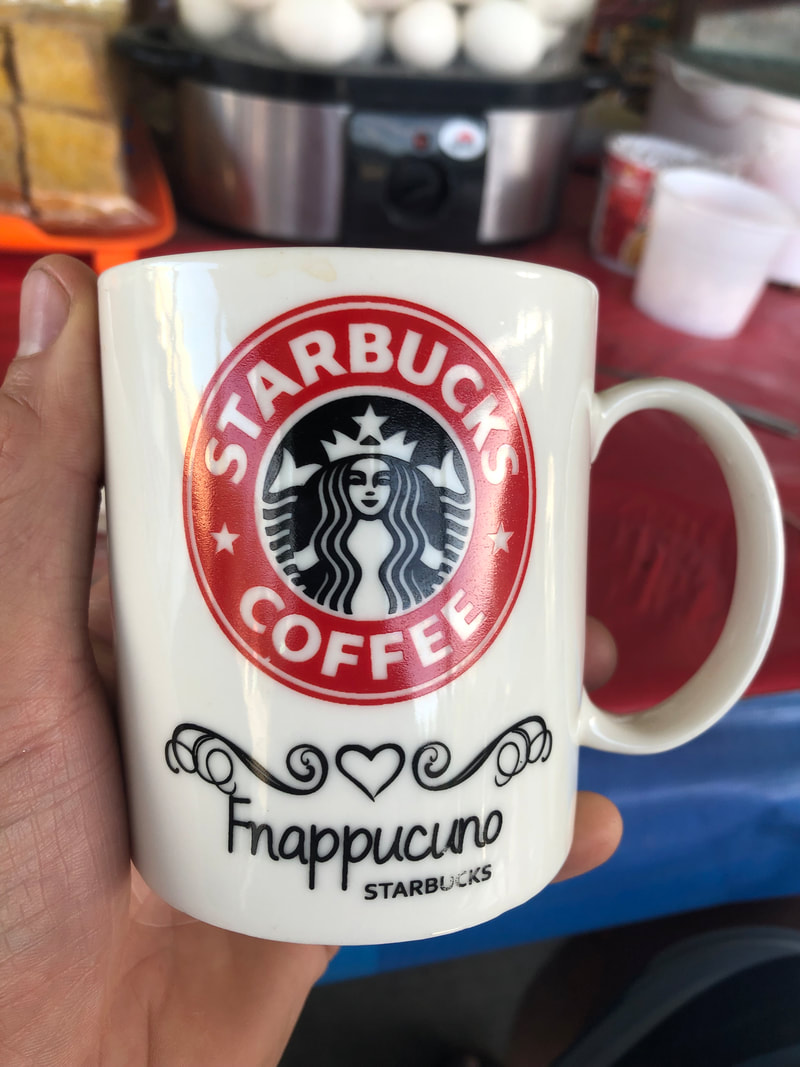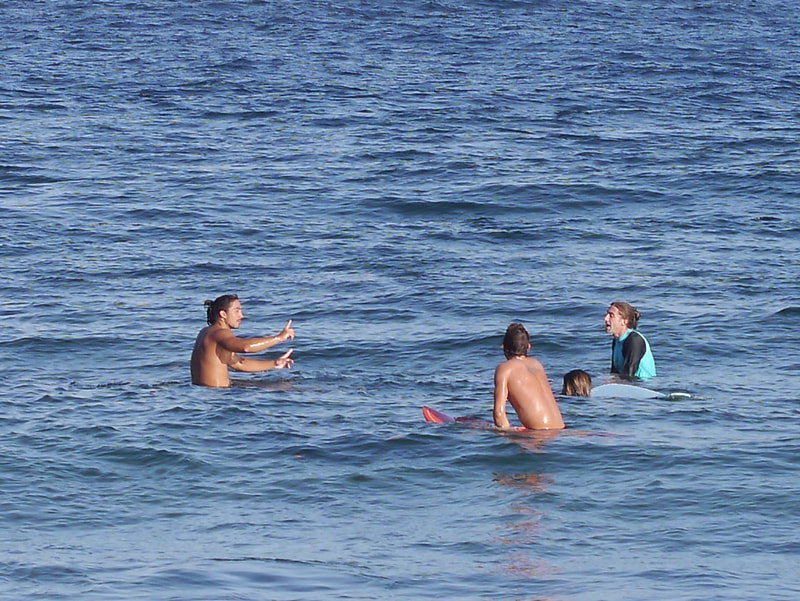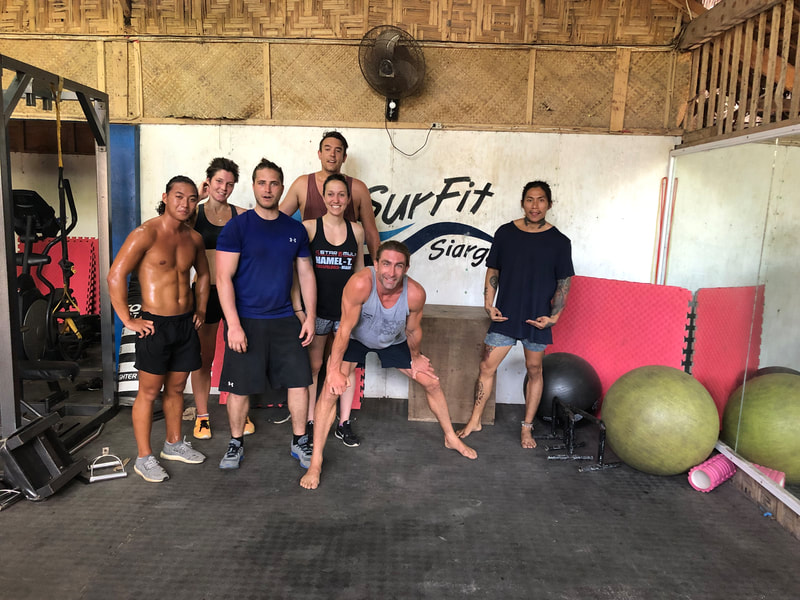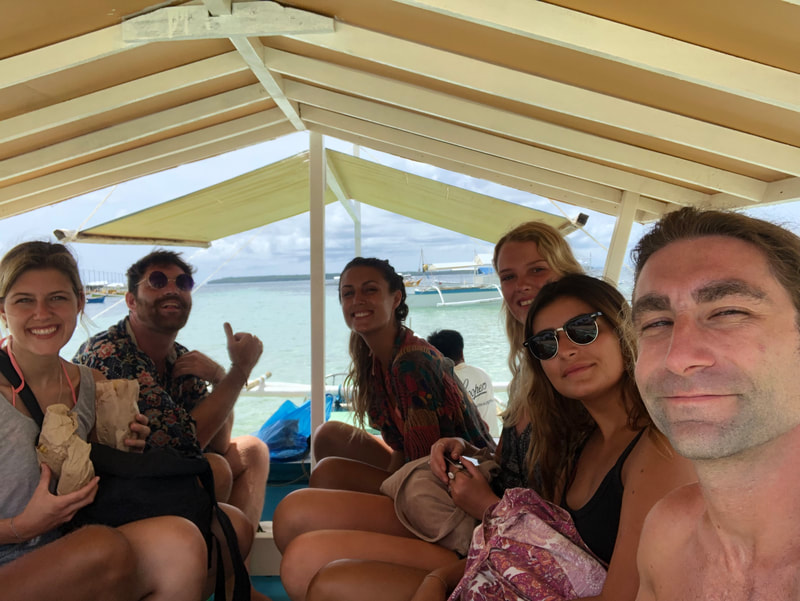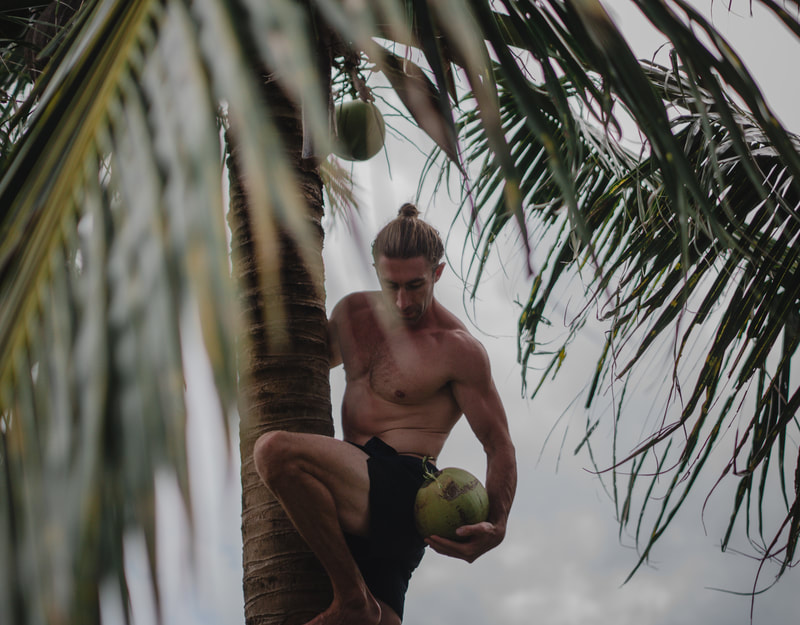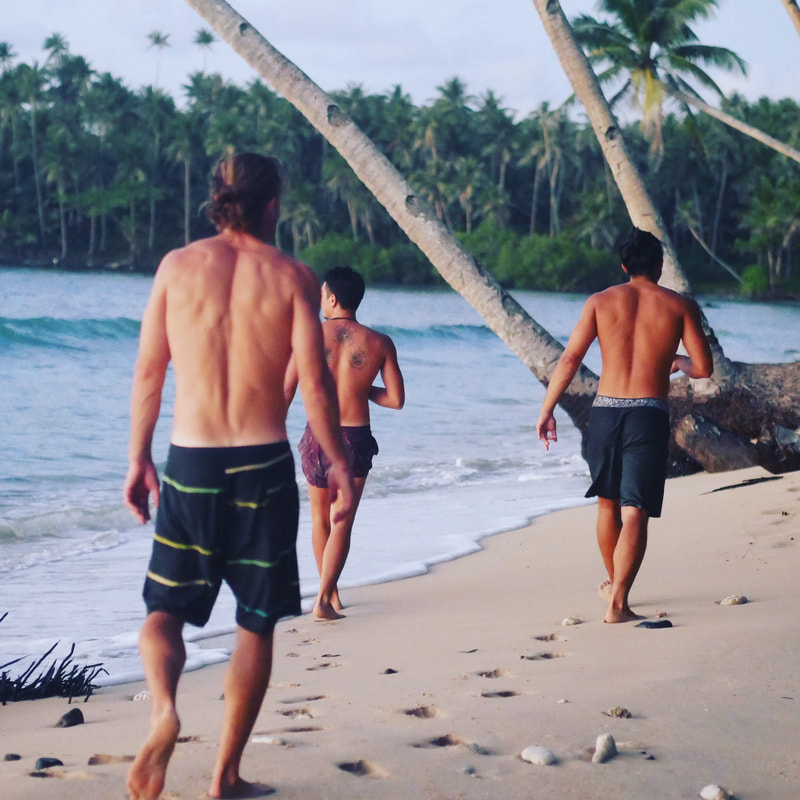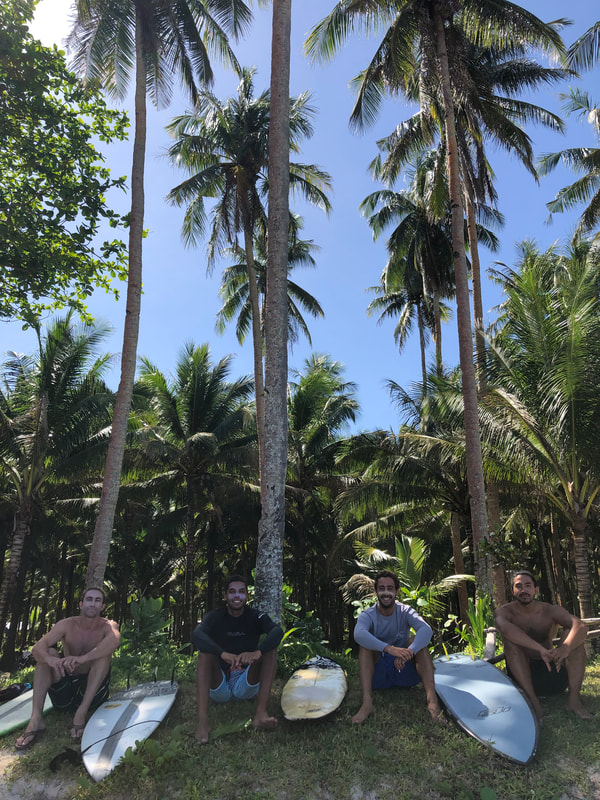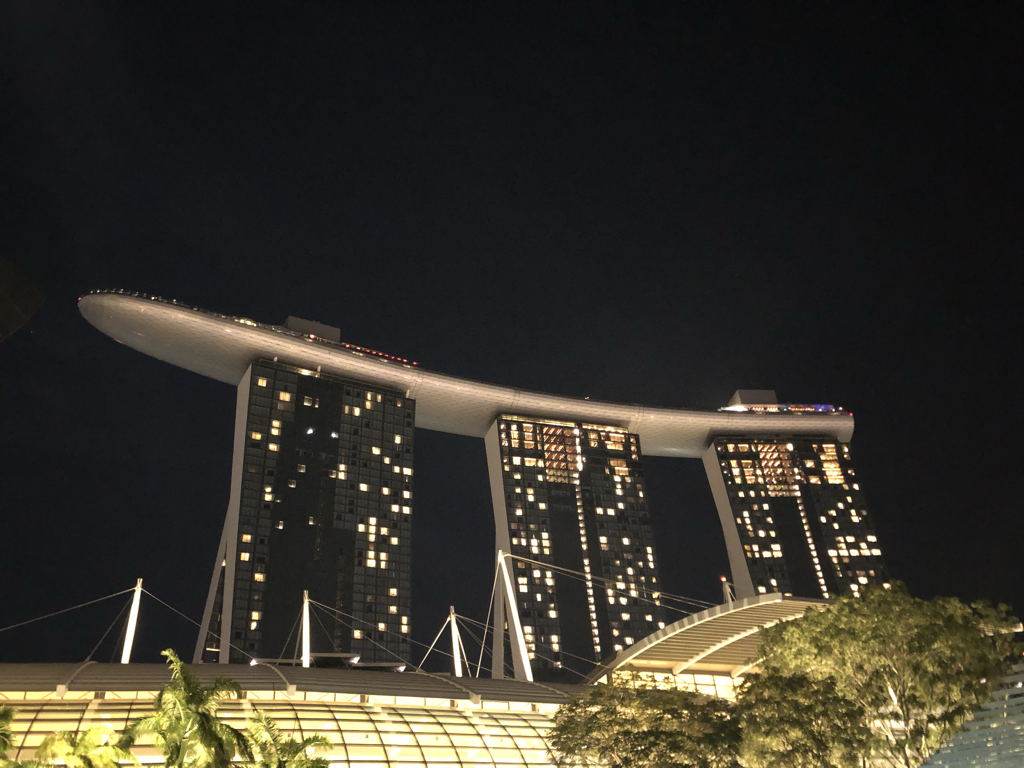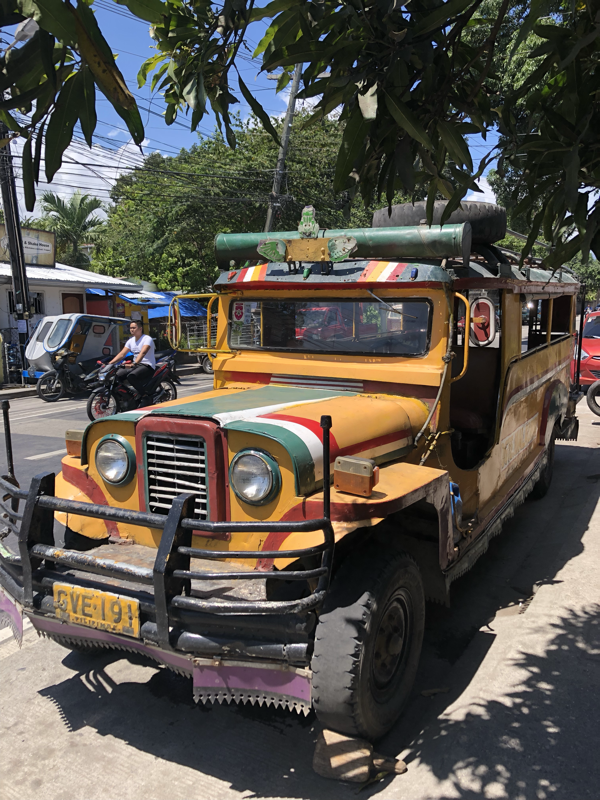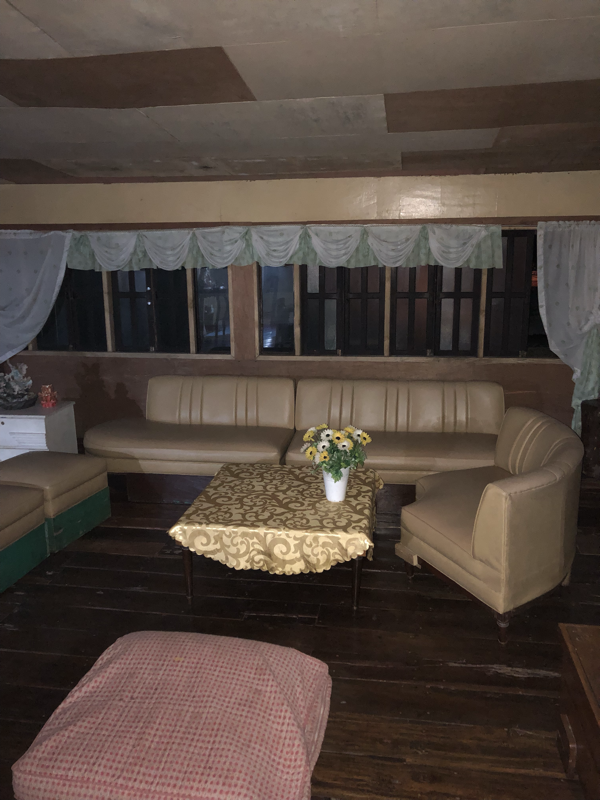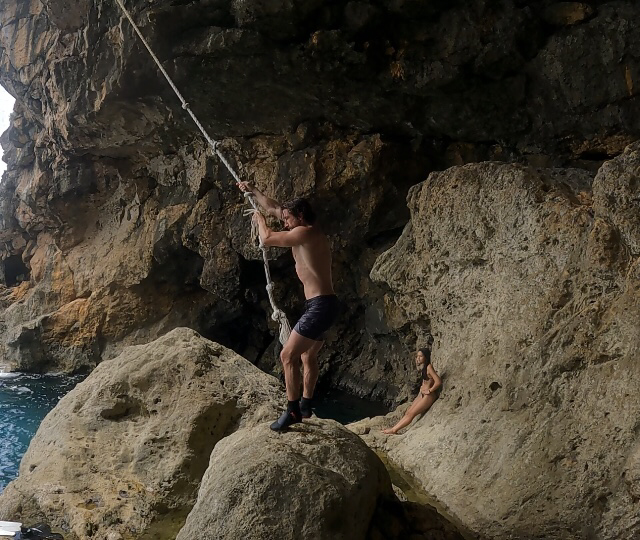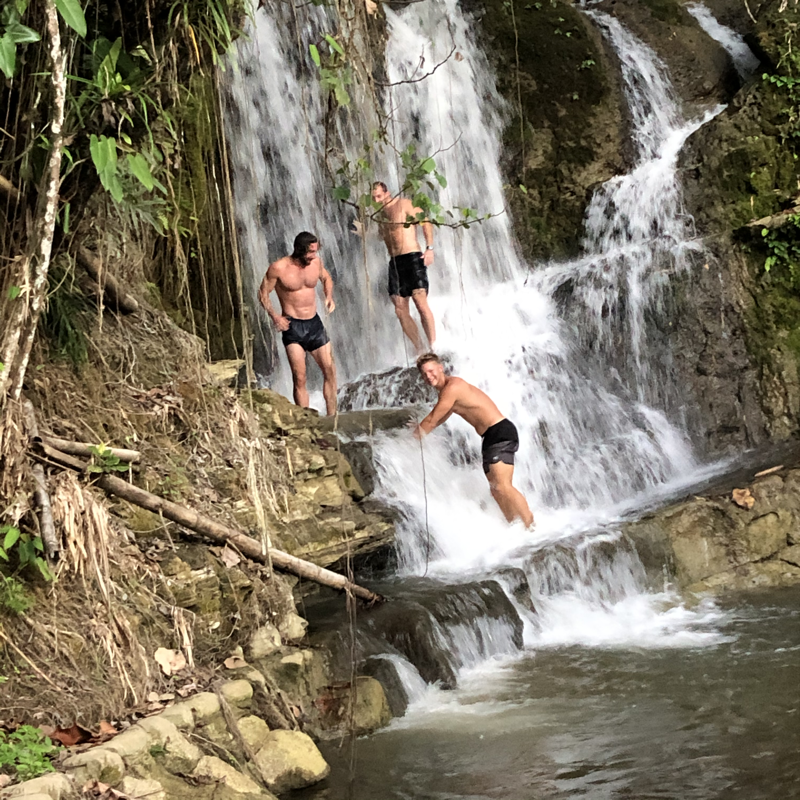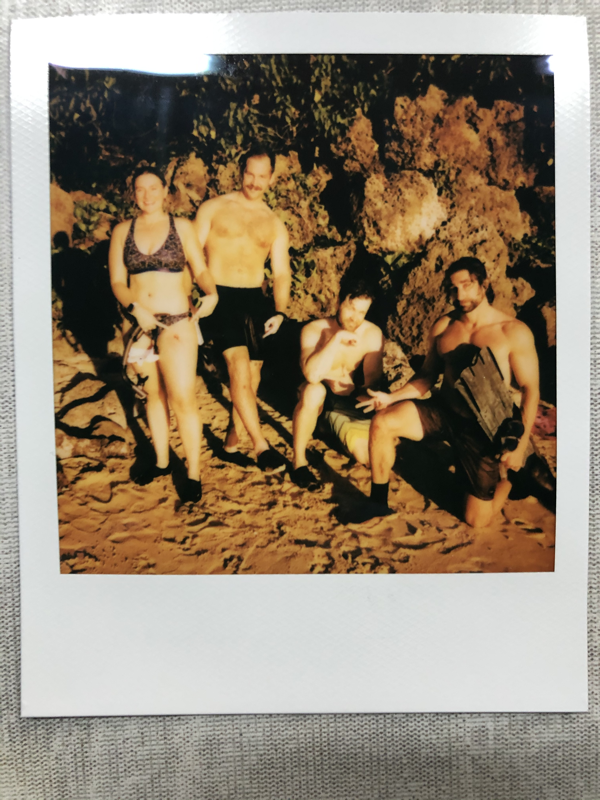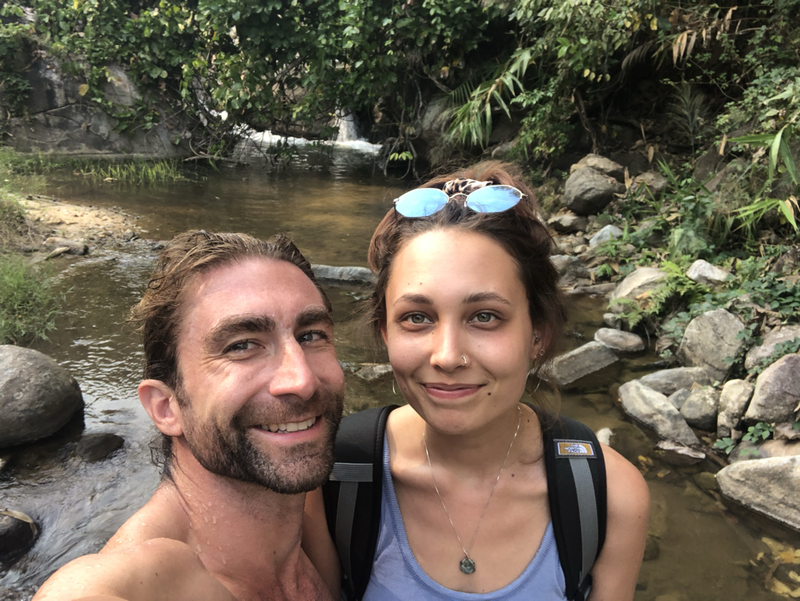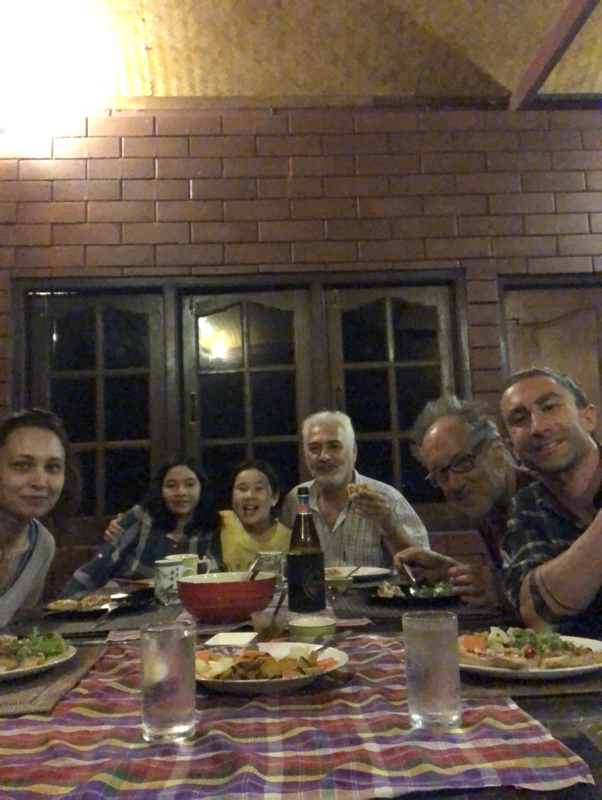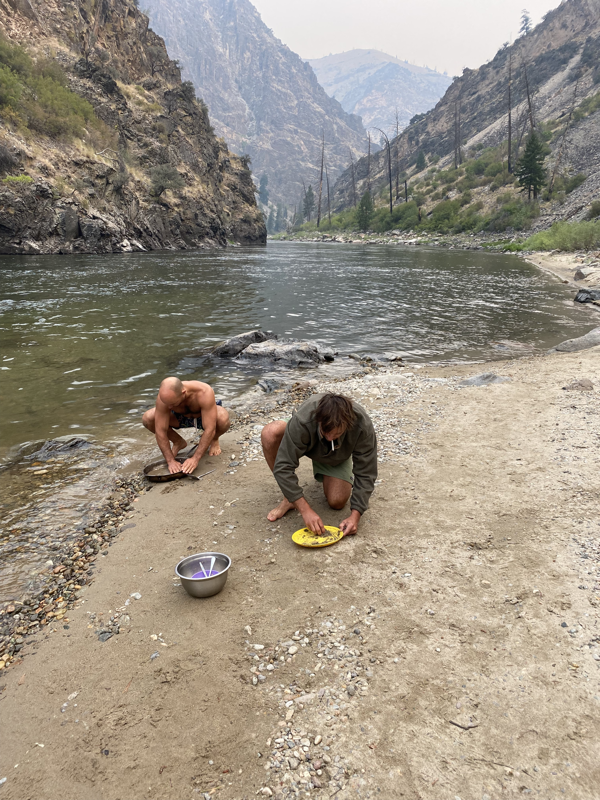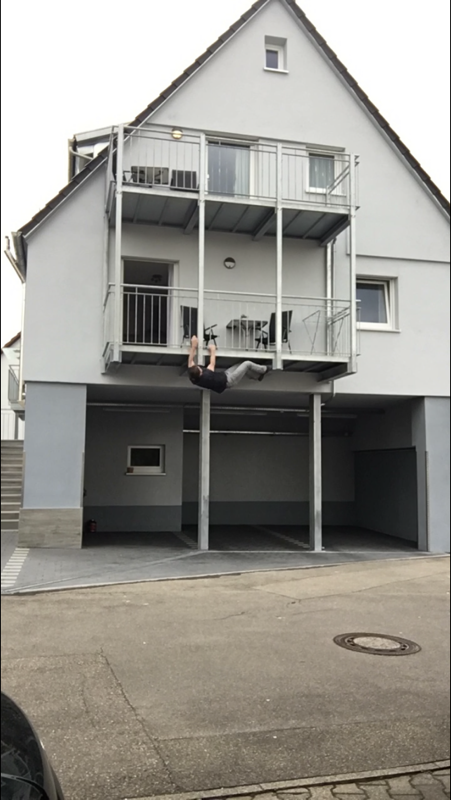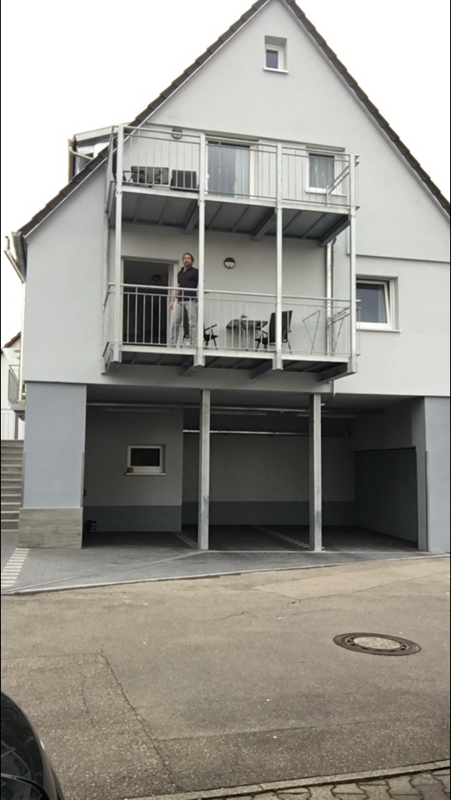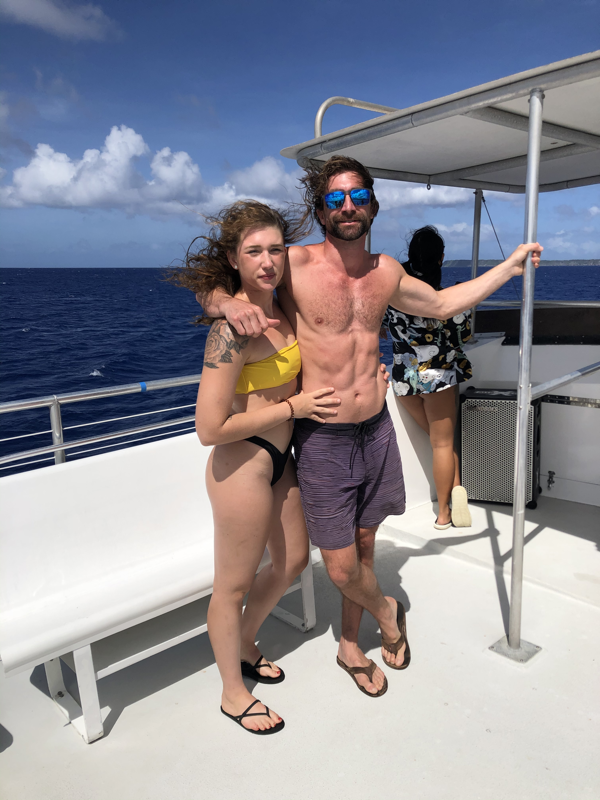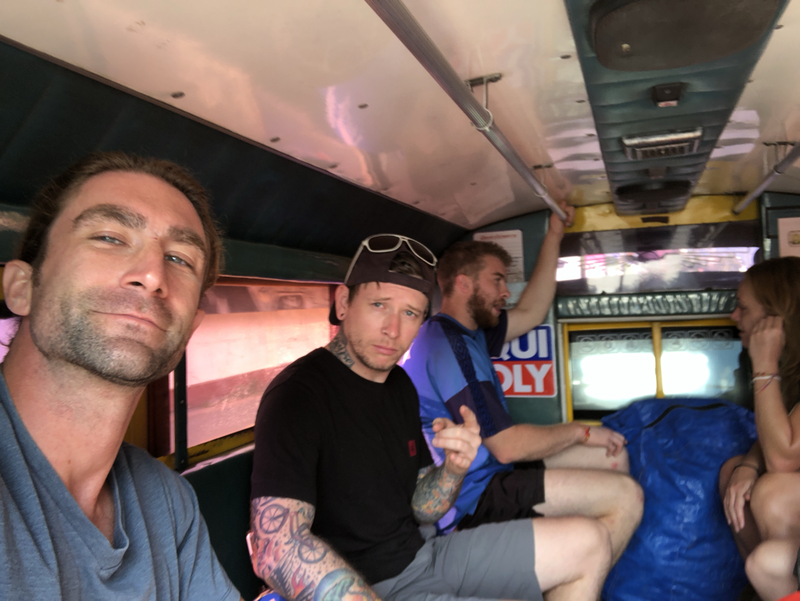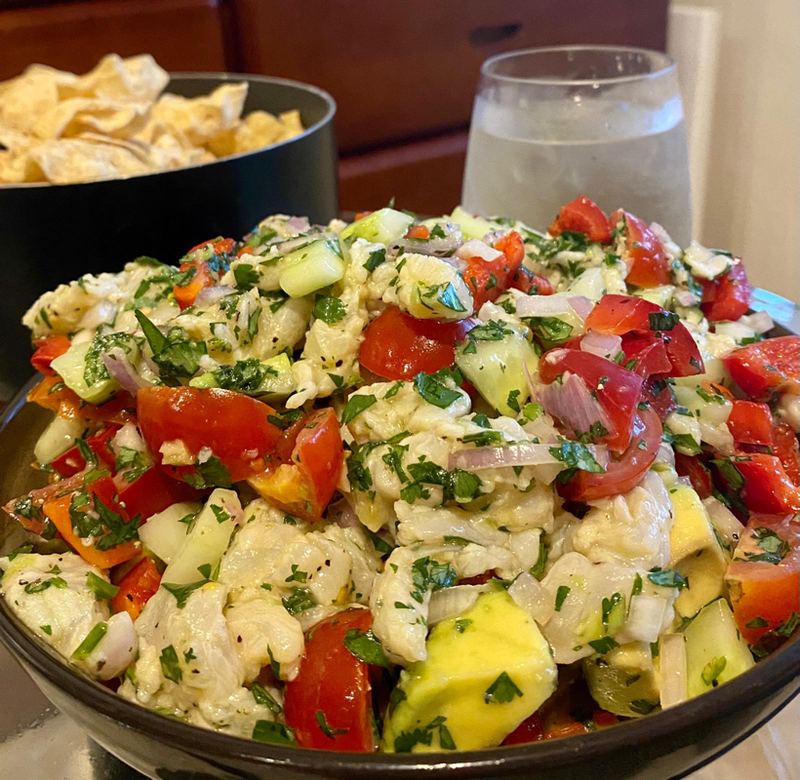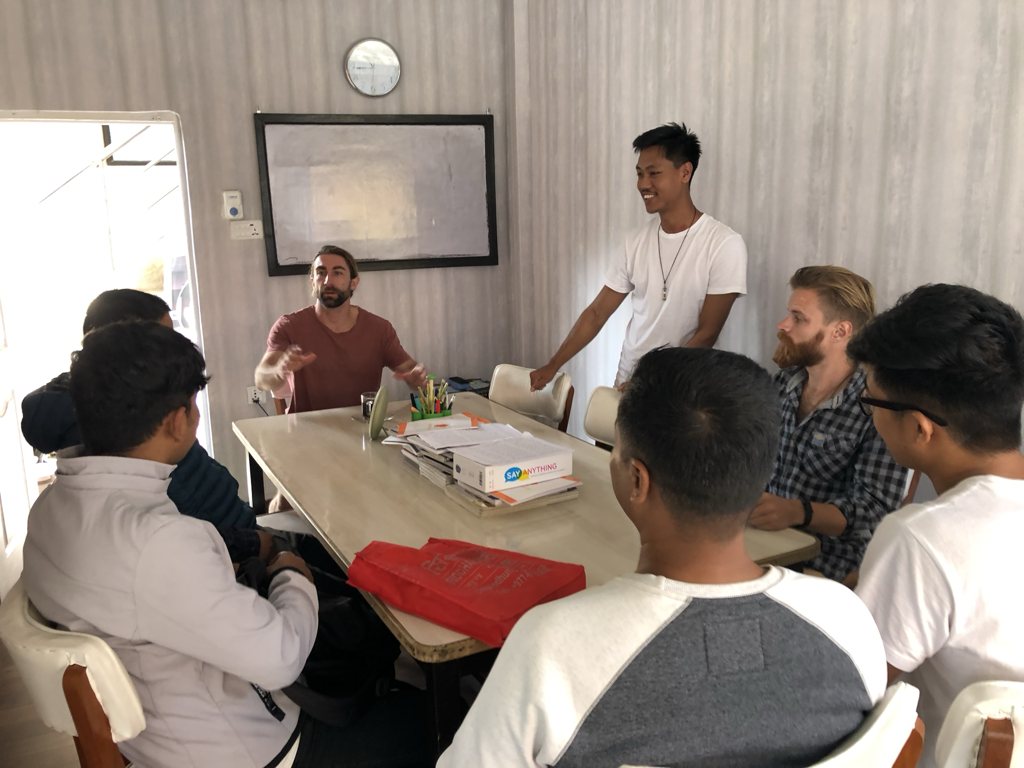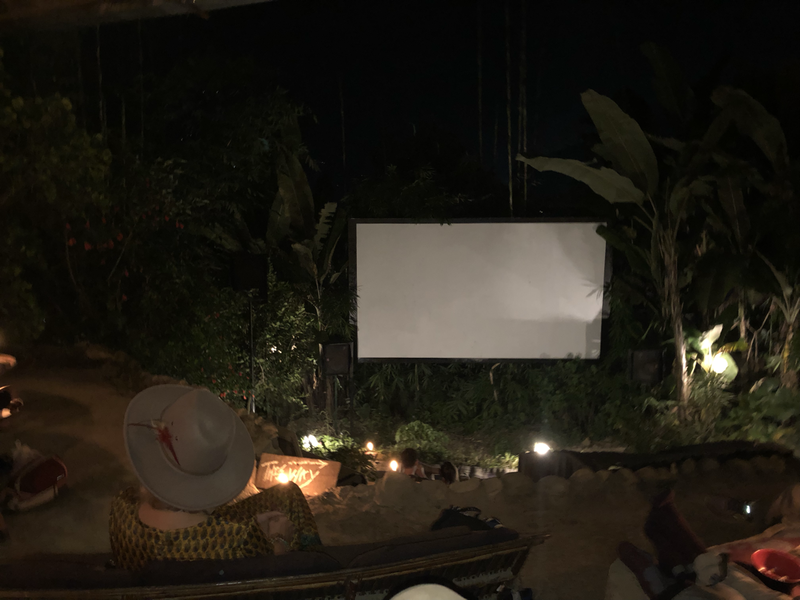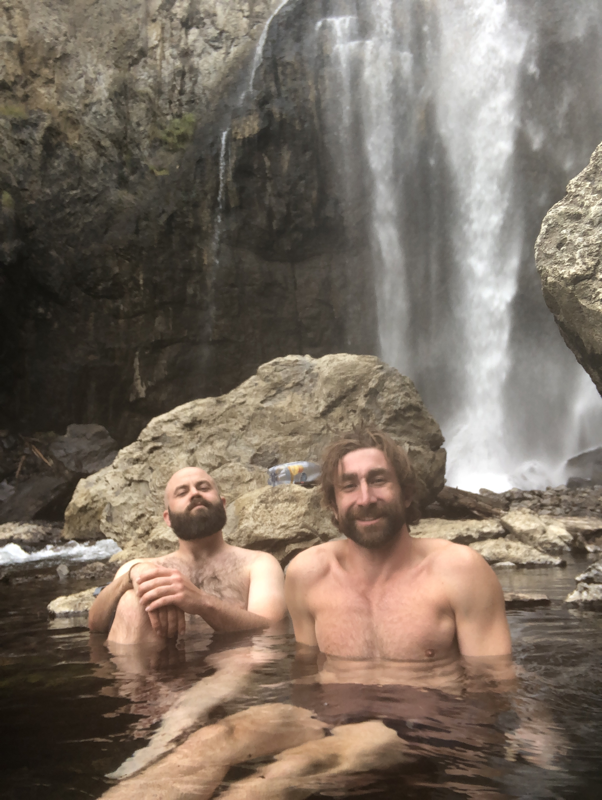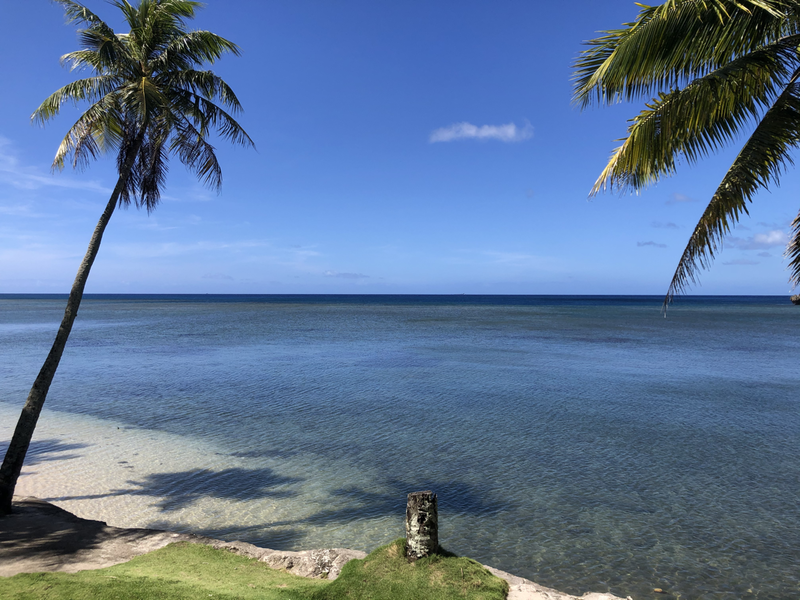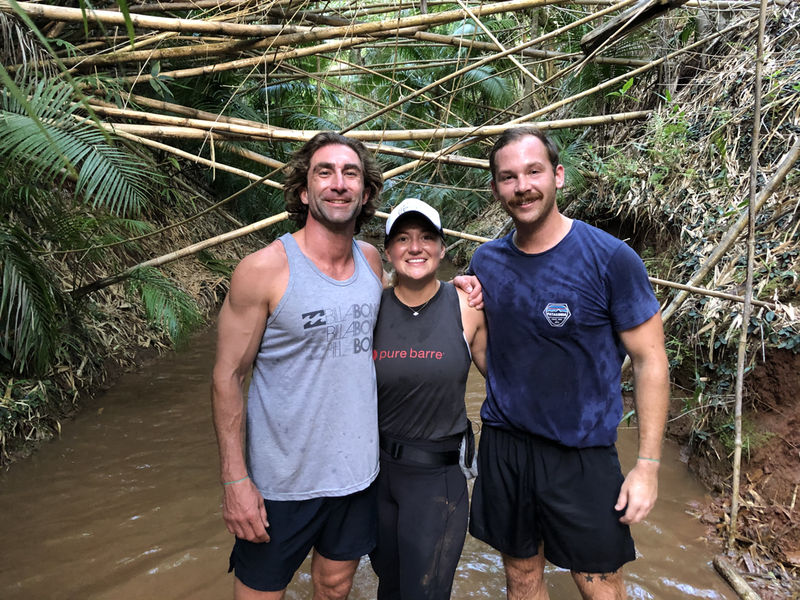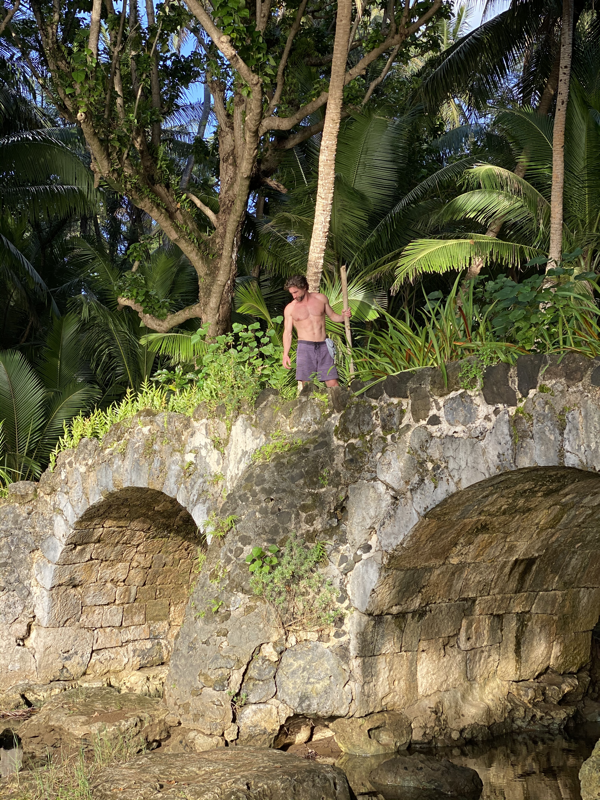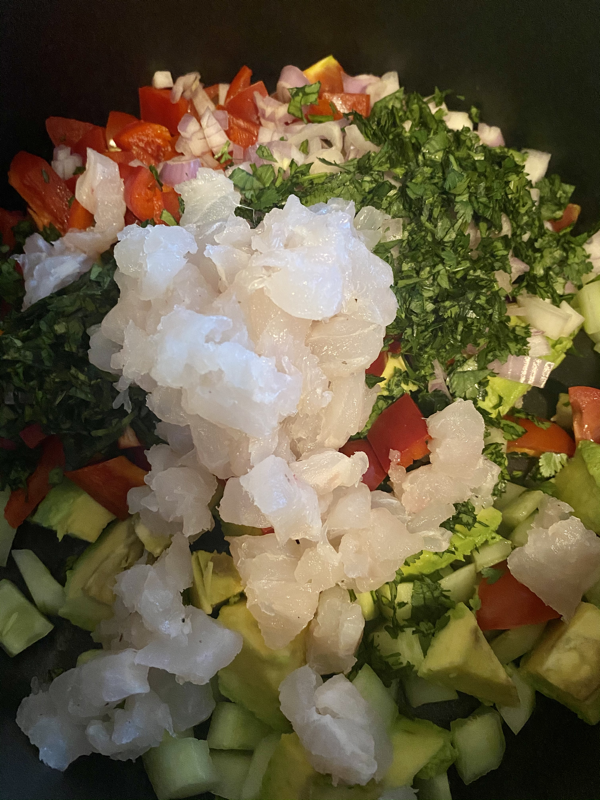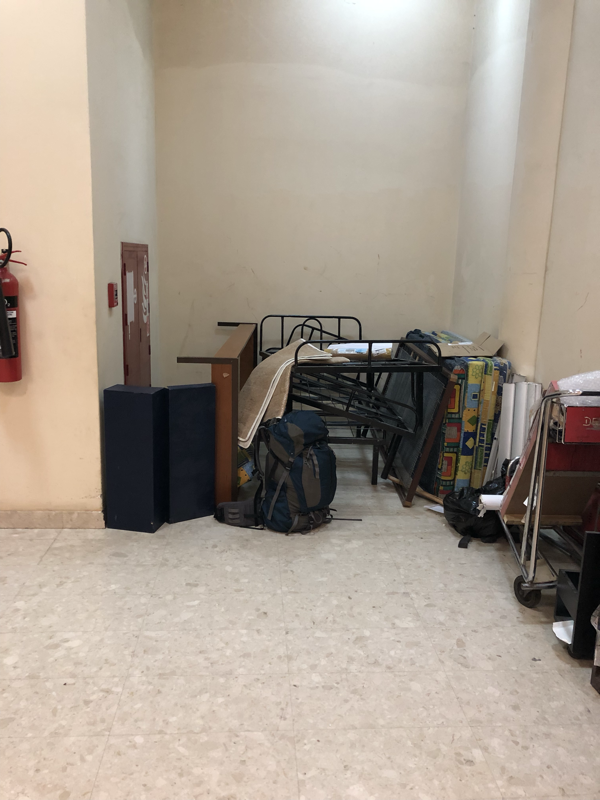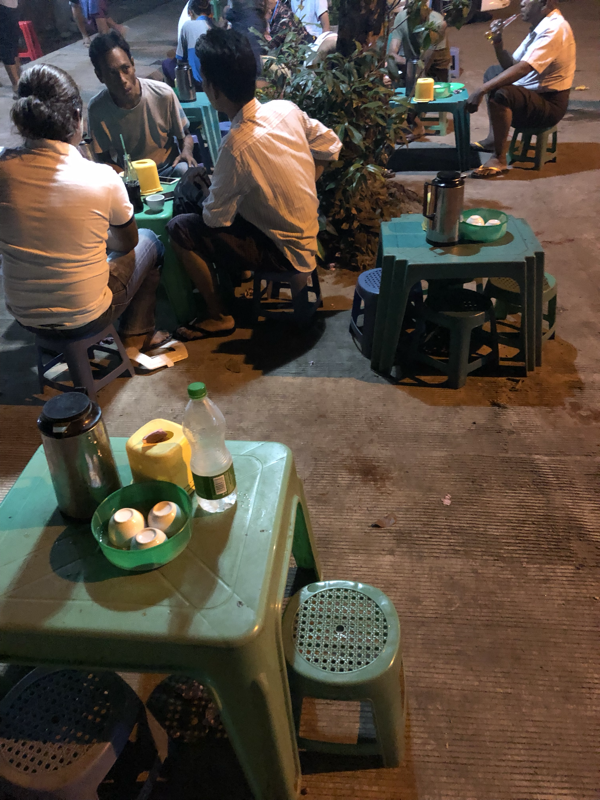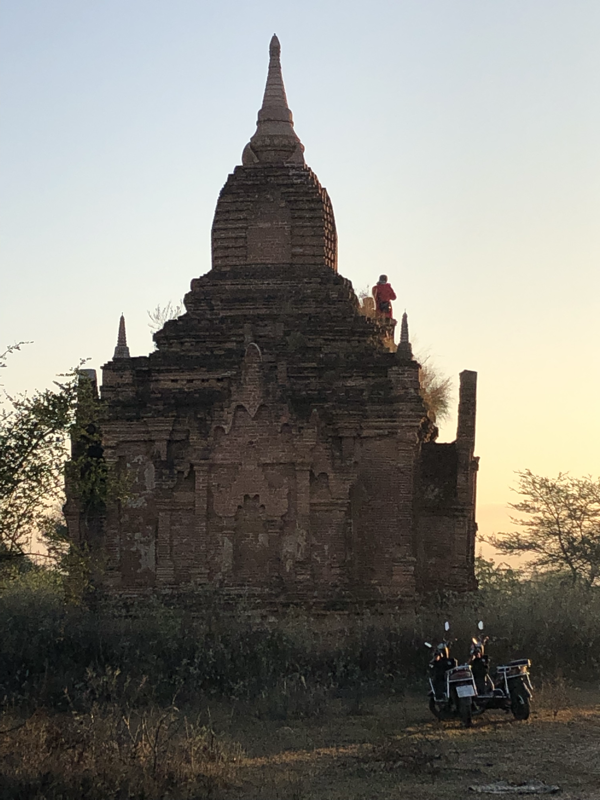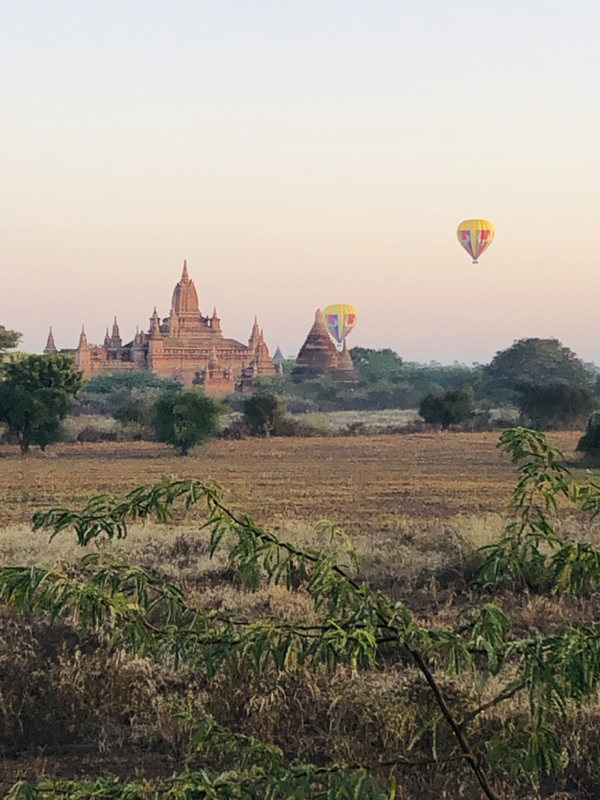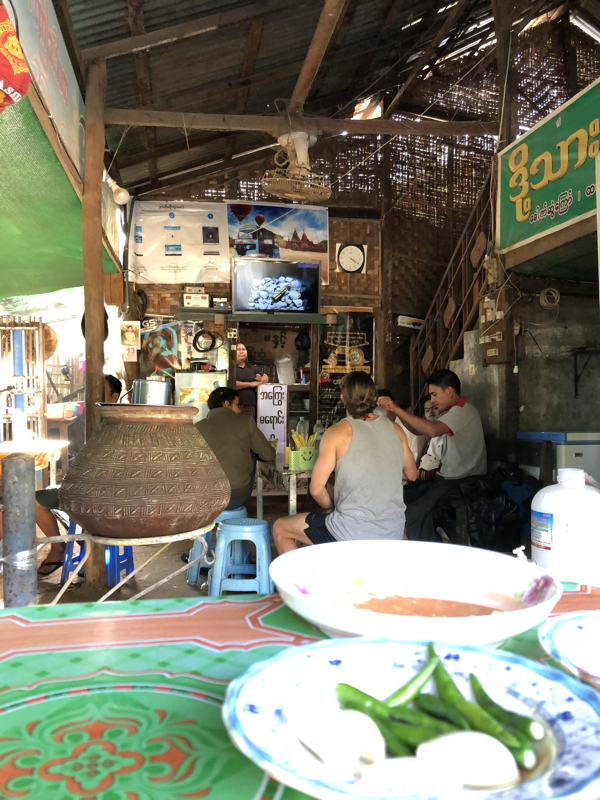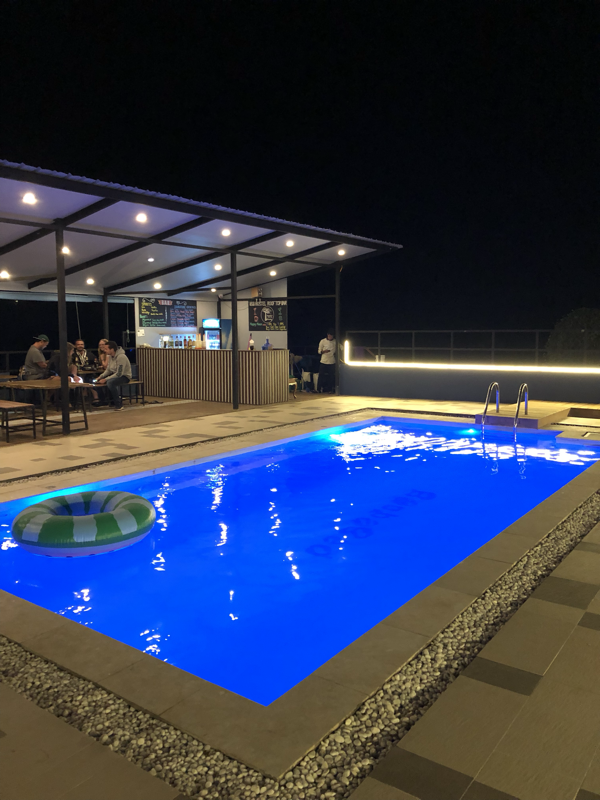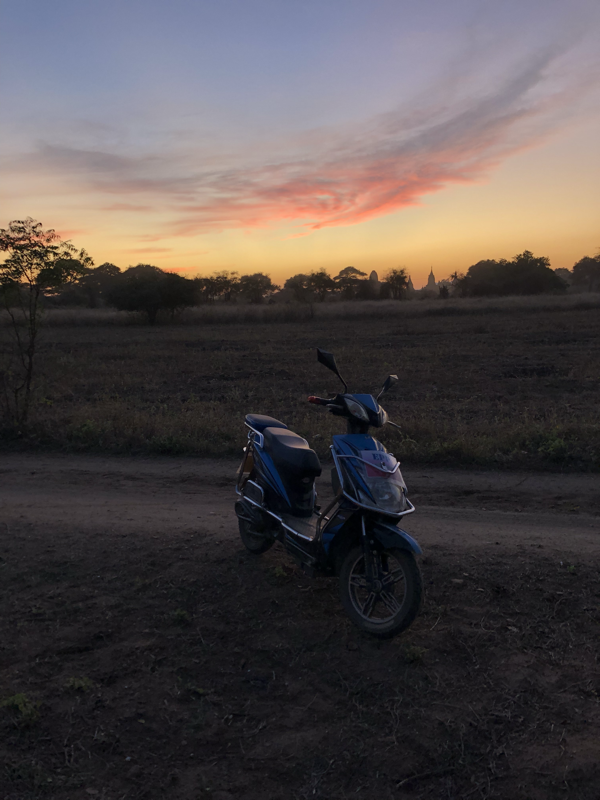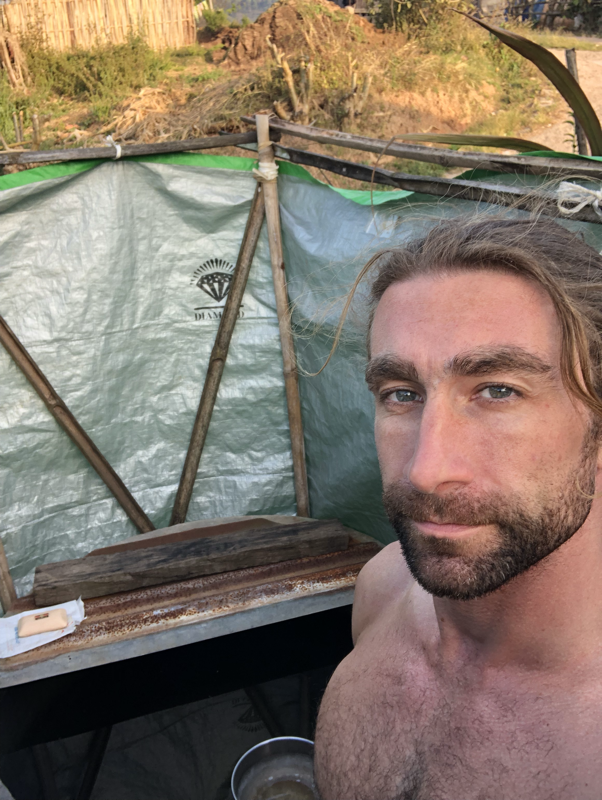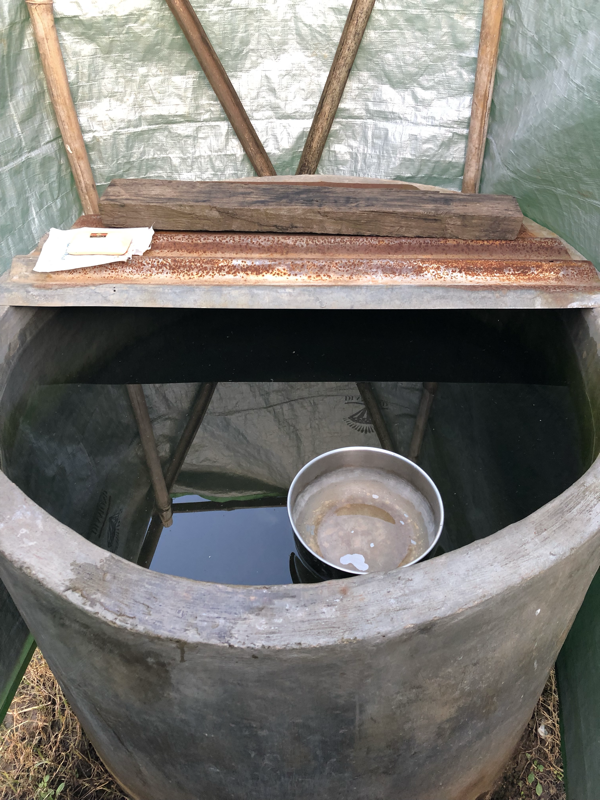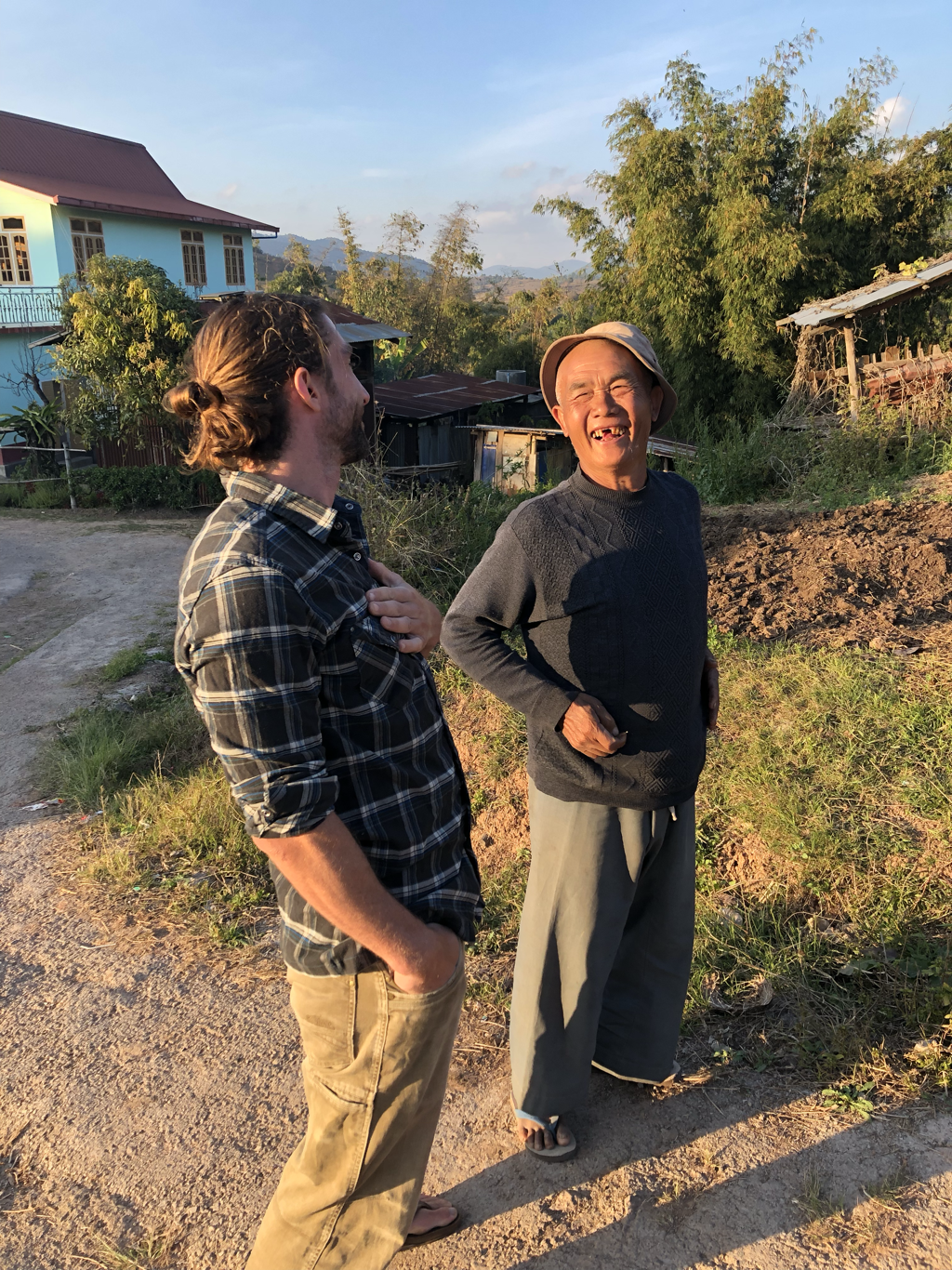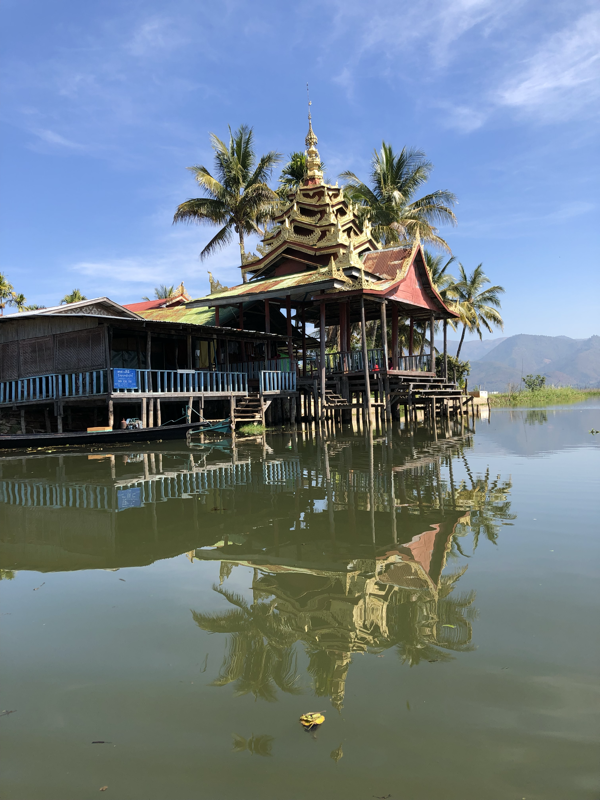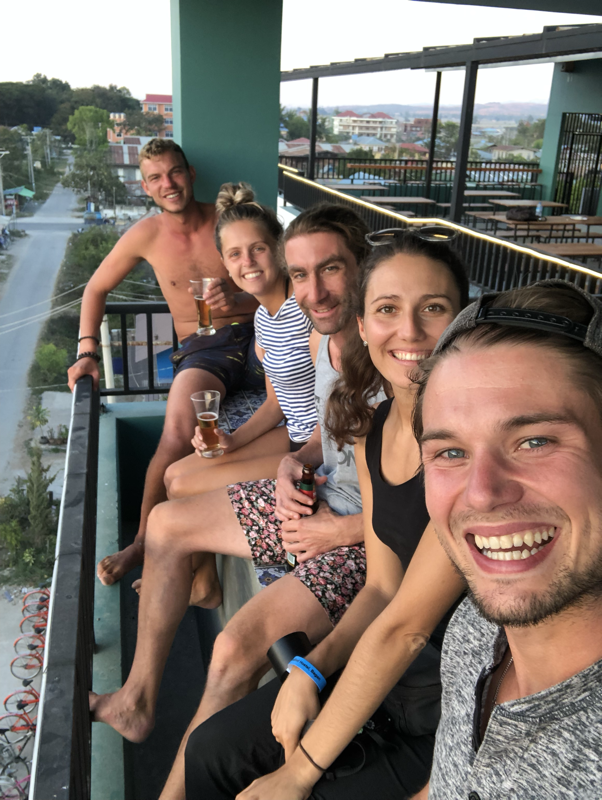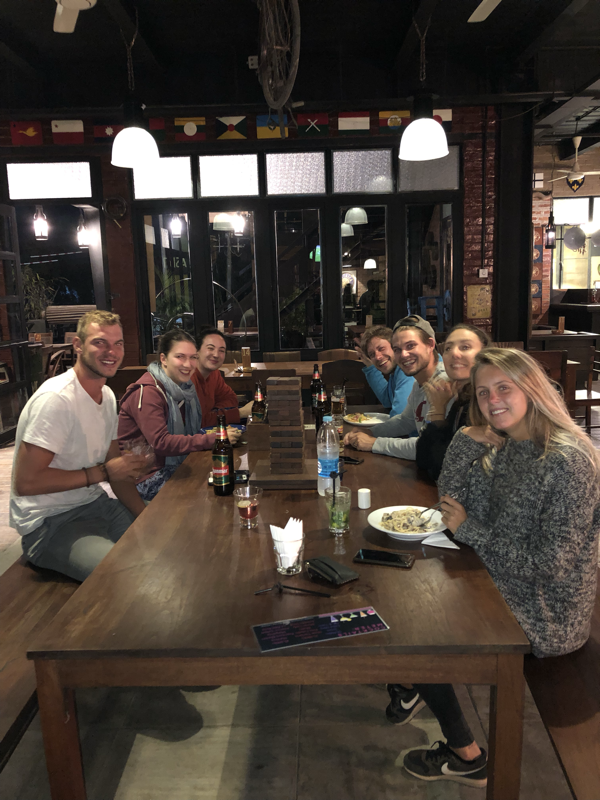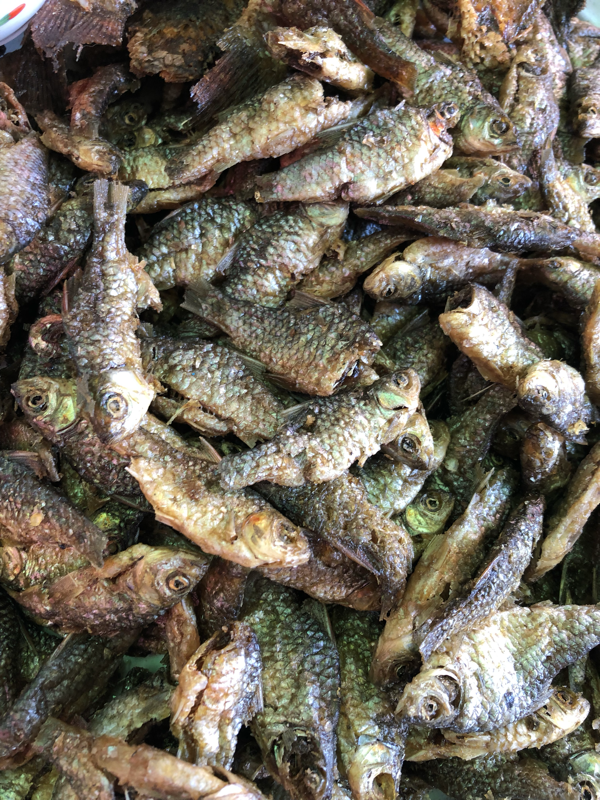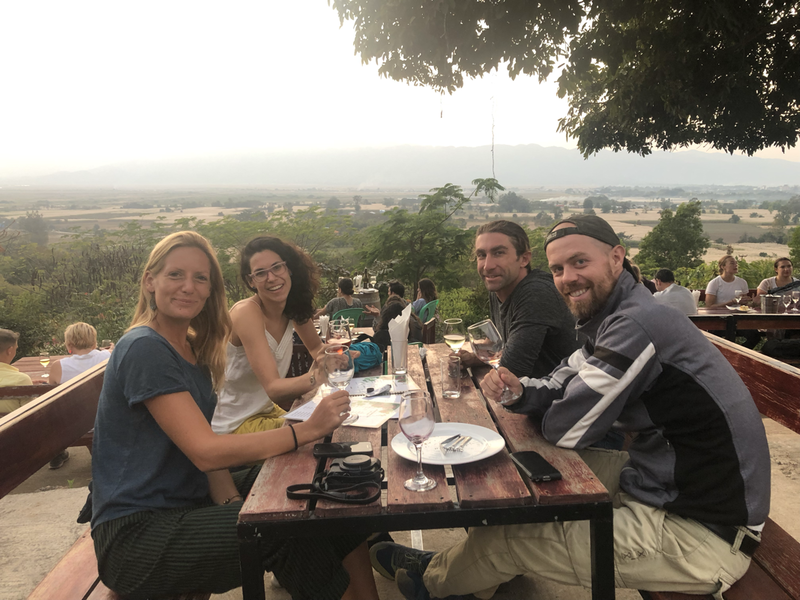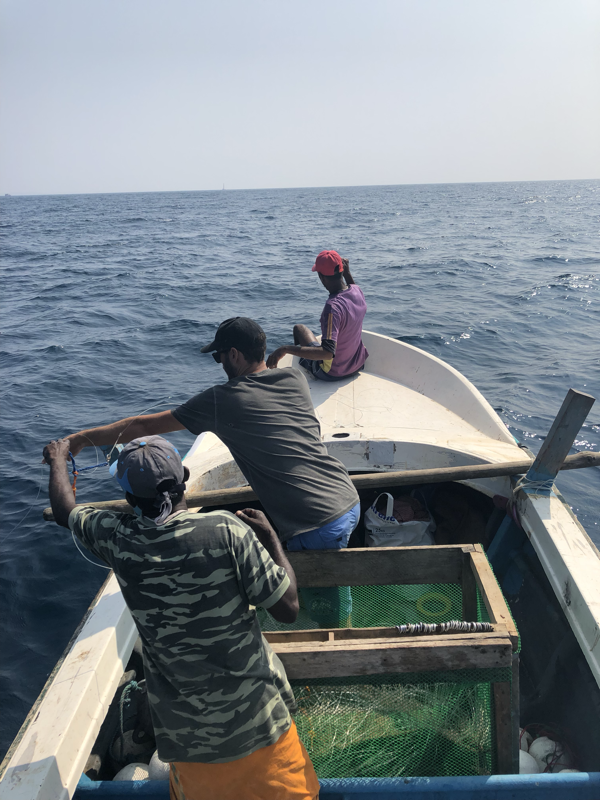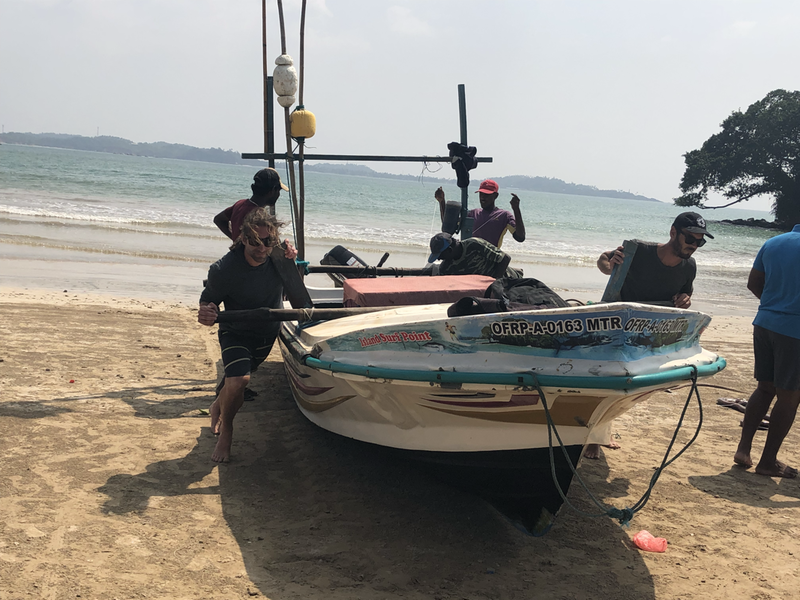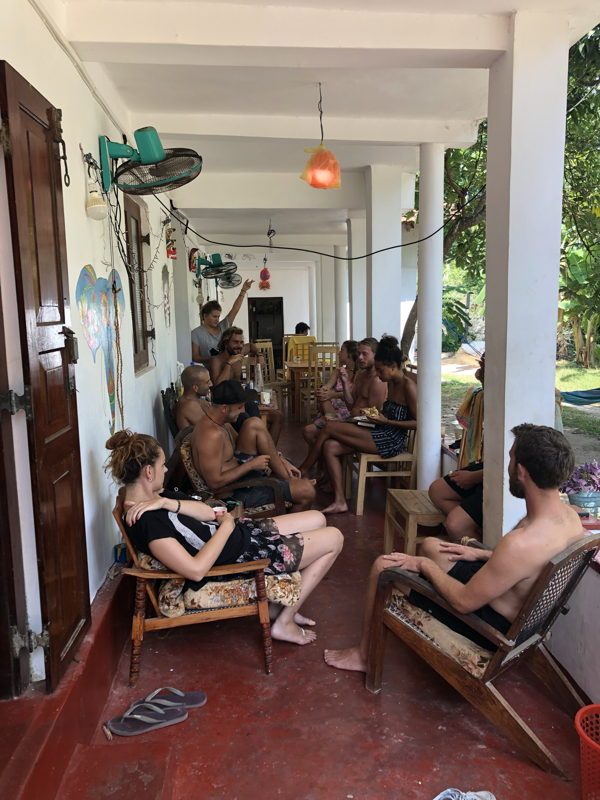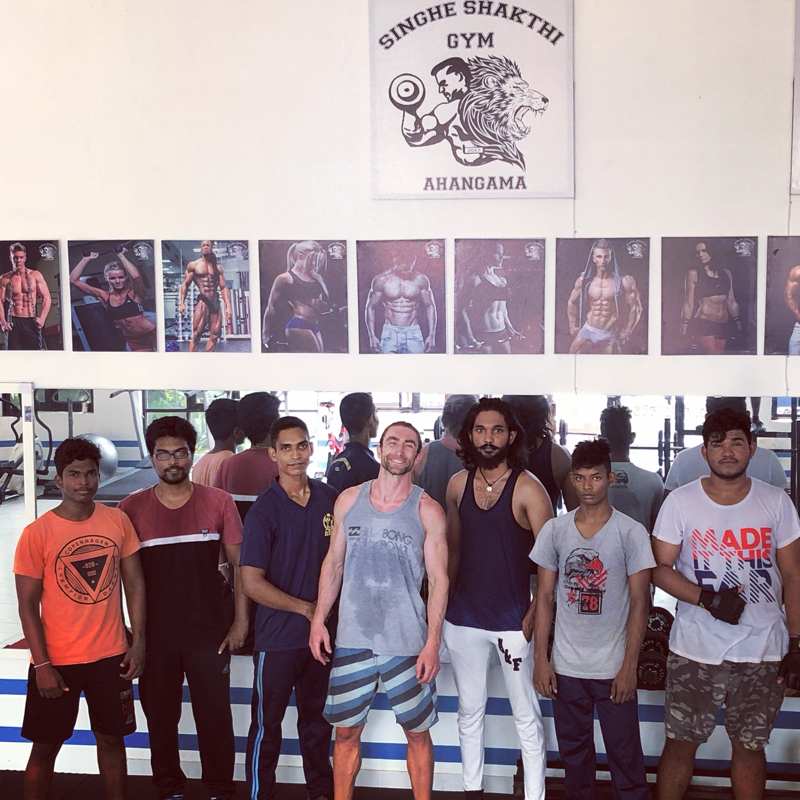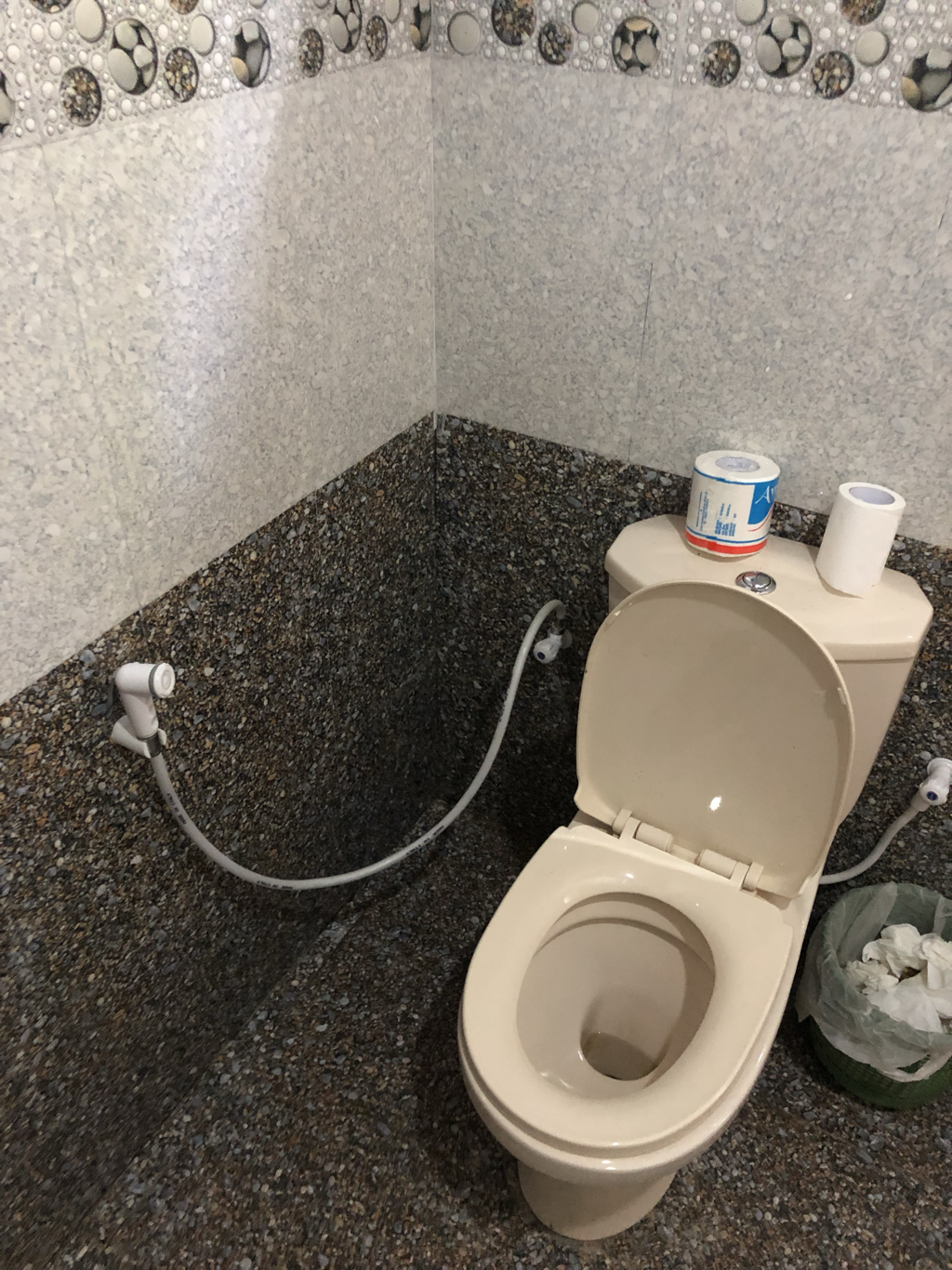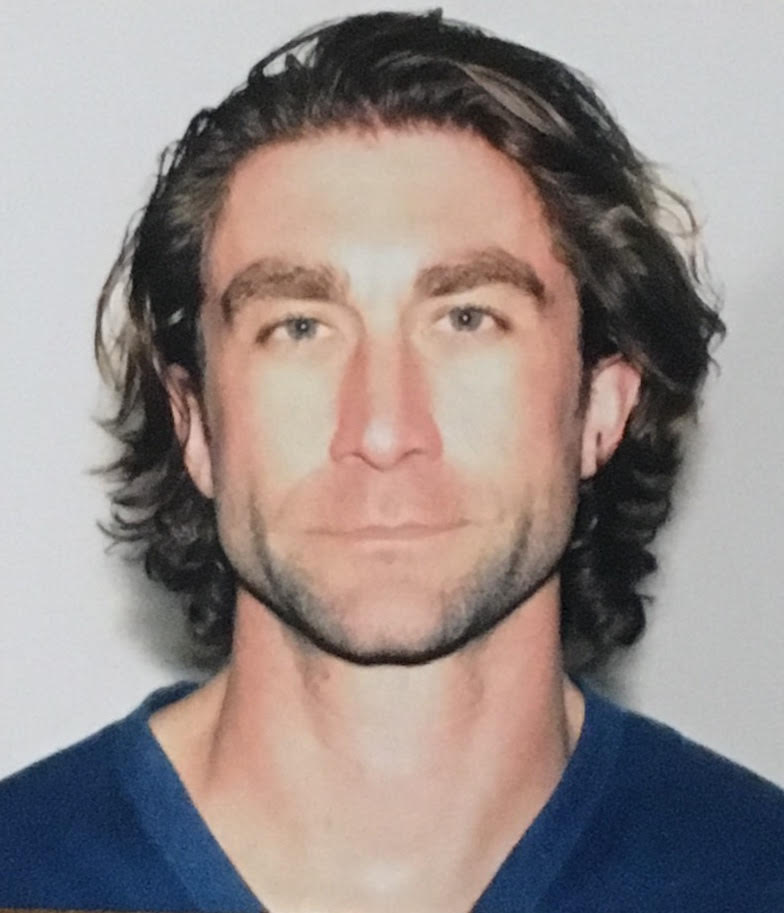|
There were wet footprints leading to where my backpack was propped against the wall next to my bed. I could see immediately that my bag had been rummaged through. “No, no, no. Fuck, fuck, fuck”, I said to myself under my breath. A local woman sells her wares on Mabul Island, Malaysian Borneo After returning from a freediving session I had grabbed the key from the front desk of my hostel and strolled into my six bed dorm. Unlike most hostels there were no lockers to secure valuables but the dorm room was always locked and only opened for those staying in it. How could I have been so fucking careless? Schooling Jacks in Semporna, Malaysian Borneo PC: jackychan_uwphoto Digging through my bag my wallet was gone but I found my passport and backup credit cards. Ok. This sucks but we’re still in business. Then I saw my wallet laying on the ground next to my bag. “Huh. That’s weird. I’m sure the cards and cash are gone but at least I get my wallet back,” I thought to myself bitterly. Since there are no ATMs on the little island I had taken out approximately $400 to cover my expenses. This was going to hurt. I bent over and picked up my wallet. “Wait. What??!!” My cards and all of my cash were still in the wallet. This is just bizarre. Worst thieves ever. Hell yeah! After going through my bag, not a single thing was missing. I’ve racked my brain and I think that one of the other dorm inhabitants must have lost something and decided to to see if someone else in the dorm had stolen it. My little backpack with my wallet, phone, and passport was with me from then on. I even slept with a leg over it. No point in pressing my luck. A juvenile jack joined me as protection from larger fish After spending a few days taking in the wildlife in Kinabatangan National Park I had headed to the Malaysian dive destination of Semporna. Several days on Mabul island were spent freediving to the local dive sites that were conveniently located at a depth of around 60ft. Instead of paying to scuba dive I opted for the far cheaper and more exciting breath holding option. As my brother Luke aptly noted, pulling up next to scuba divers while freediving “feels like having a super power.” Why scuba dive when you can freedive instead? From an overhead view, Mabul island looks like a pin cushion with piers jutting out from every angle. Locals and dive outfits alike have built lofted villages above the water to expand the island’s limited real estate. Semporna’s natural coral and marine life is undeniably impressive but there was an alarming amount of garbage in the sea. One morning I watched a man fishing out of his living room for his breakfast as a freshly discarded baby diaper floated by. It was a jarring image. Better education and waste management will be crucial where natural treasures are threatened by human activity. Hopefully humanity can figure out a way to curb population growth and find a sustainable coexistence with our environment before it’s too late. To get to the heart of Borneo I found out that I would have to make my way to Miri, which hosts the only airport in Malaysia flying to the rainforest highland town of Bario. The 12-seater “Twin Otter” prop plane which makes the flight, looks out of place next to other, normal sized passenger planes on the tarmac. As the crow flies, I was closer to Bario from Semporna than Miri, which is on the opposite side of the massive island, but since I can’t ride a crow, I got moving. From Semporna I took a series of boats, buses, and flights from the eastern coast of Malaysian Borneo to the western coastal town of Miri where I could be spirited off to the rainforest hinterlands. For full videos subscribe to my youtube channel at: https://youtu.be/SAroP_9azY0 For daily videos follow me on instagram at: restlessben
3 Comments
First ResponderThe sickening, metallic crunch of an unanticipated collision punched my eardrums like a thunder clap. Instinctively, I whipped my head around and scanned the scene. There had been no telltale screeching of tires. Apparently, no one saw it coming. A white helmet came bouncing past me followed by the hilux pick-up that had just broadsided a motorcycle. The truck rolled past and slowed to a stop. Through the windshield I could see the driver’s face was blank, pale, shocked. I spun around and strode towards the body slumped on the ground. The man lay 20 feet from a mangled bike that had sent sparks flying across the asphalt before skidding to a stop. The lights were on and the engine was still running. Village market at the base of Mt. Kinabalu In situations like this, bystanders are often collectively shocked and fail to recognize themselves as first responders. “Surely someone more qualified, some authority figure, will appear and handle this,” the rational goes. “This isn’t my role.” As precious time slips away, the faces in the crowd look around helplessly at one another, desperately hoping someone will take control. On this cool evening, at this roundabout, next to this village market in Borneo, it was me. I was the closest person. I was even closer than the people in the car that just hit him. “Take action,” I told myself as my heart pounded and I struggled to think clearly. "The man lay 20 feet from a mangled bike that had sent sparks flying across the asphalt before skidding to a stop." As Mike Tyson put it, “Everyone has a plan until they get punched in the face.” Adrenaline clouds your thoughts. This is why simple acronyms are so useful in stressful situations. “MARCH,” I said to myself outloud. “Massive bleeding, ummmm... airway, respiration, circulation, hypothermia. Ok. Ok.” Kneeling down beside the man, I could see that he was in his 70s, unconscious, and had a small pool of blood around his face. His breathing was heavy and labored. A quick scan revealed he likely had a few broken ribs, possibly a punctured or collapsed lung, a broken ankle, and blunt force trauma to his head. “Ok, massive bleeding,” I said, still talking to myself outloud as people began forming a circle around me. No. The bleeding from his head had slowed to a trickle. “Airway.” He was already slumped on his side in the recovery position so I didn’t need to move him. I gingerly pulled apart his lips to find dentures lodged sideways in his mouth. I pulled them out and set them on the ground next to him. Respiration. Yes. Circulation. Yes. Hypothermia. Yeah, yeah, he’s good but we need to get him to a hospital quickly. My eyes shot up to the driver of the pick-up. “Call an ambulance,” I barked at him. “I didn’t see him,” the man whimpered. “I don’t care! Call an ambulance!” Standing up, I could tell he was too shocked to be of any use. “Fuck.” I hissed at no one in particular. I would have called one but I didn’t know the emergency number. Was it 911? 111? 000? 999? Shit. I made a mental note that this would be a good thing to put into my phone every time I went to a new country. My eyes scanned the people around us and locked on a young man who had his phone out. “Ambulance?” I asked urgently. He nodded. I crouched back down as two others joined me. Now there were cars parking along the side of the road and the crowd had grown. People were directing traffic around us. One of the men beside me had waved down a pick-up truck and motioned to move the man to it. In the USA or Western Europe, waiting the short response time for an ambulance to arrive would likely be worth it to avoid exacerbating injuries to the neck or spine, but here I had no idea when the ambulance might arrive, if at all. It made sense to risk it to get him moving. Time was the enemy. "Under the glow of the street light I could see that my right hand was bloody but so was his. I gave him a firm, grateful handshake." The man’s eyes fluttered opened and he tried to lift his head as the three of us lifted him. Almost in unison, three voices, in two different languages urged him to relax in reassuring tones. Rushing around to the other side of the vehicle, I climbed across the seat and helped pull the man into the vehicle. Once he was positioned, we closed the doors and the car sped off. One of the men that had been helping me smiled and stuck out his hand. “Thank you,” he said. Under the glow of the street light I could see that my right hand was bloody but so was his. I gave him a firm, grateful handshake. “Of course,” I said, smiling wearily. Another pick-up with several young men in the truck bed waved at me as they drove past. I waved back. They had hoisted the man’s motorcycle into the truck and appeared to be bringing it to the hospital for him. No ambulance or police car in sight but plenty of helpful bystanders willing to come together and help a stranger. Well done humanity. Well done. Port BartonIt had been a week since I headed back down through Northern Luzon from Sagada to catch my flight to the Philippine Island of Palawan. On the way, I stopped in San Juan for some longboarding on small but clean waves. Once I made it to Palawan, instead of heading to El Nido, where the tourists flock, I opted for the backpacker haven of Port Barton. White Beach, Port Barton Coco Rico is Port Barton’s undisputed party hostel. I was content to stay at a quieter hostel around the corner but booked an island hopping booze cruise with them which turned out to be an excellent decision. My liver probably disagrees. The day before the cruise, I joined a group from the hostel for a day trip to White Beach where we played volleyball, threw the frisbee and lounged in bamboo hammocks. When we got back, I decided to come by Coco Rico for a low key nightcap with my new friends. Afterall, I wanted to take it easy to be fresh for the booze cruise the next day. Fit for human consumption? They had other plans. Plans that involved a shot of vodka with an entire energy drink powder packet dumped into it. I reluctantly bowed to peer pressure and knocked back the Southeast Asian Four Loco equivalent. A few San Miguel's helped get the taste out of my mouth. Before I knew it I had traded my tank top for a girl’s dress to get cheaper drink specials since the evening’s theme was “Gender Bender.” I regret nothing. It fit like a glove and I looked fabulous. "They had other plans. Plans that involved a shot of vodka with an entire energy drink powder packet dumped into it." Gender Bender Party The next morning I got a slow start but felt pretty good as the group of us headed to the party boat, complete with all you can drink booze, a volunteer dj from Barcelona, a masseuse, and a waterslide. It felt like a spring break commercial. After a day of drinking, snorkeling, and partying with an international cast of backpackers I crushed some street food and went to bed at 8pm. At 3am I woke up hungover, mumbled something to myself about being too old for this shit, took some advil, chugged water and went back to sleep. Day Drinking is not for the faint of heart. Party Boat Crew The minibus from Port Barton to Puerto Princesa dropped me off at Sheebang Hostel a day before my flight to Malaysian Borneo. A man on a mission, I rented a scooter and headed to a coffee shop in the mall where I used fast wifi, a VPN, and my generous brother’s Amazon Prime account to catch up on the first episode of the final season of Game of Thrones. It was bittersweet and I felt a twinge of homesickness. Why now, you may ask? Well, back home, Sunday evenings were a time for friends to gather, grill out, and throw hatchets at unassuming stumps before crowding around the TV for the newest GoT episode. For a season finale one year we even picked up kangaroo, alligator, and ostrich to grill out as we sloshed our beers together saying things like “MORE MEAT AND MEAD FOR MY MEN!” Sitting alone in a foreign country watching the show on my phone, I couldn’t help but feel a bit nostalgic. But on the other hand, I’m on this amazing adventure around the world so I’ll quit bitching. Malaysian BorneoThe flight from the Philippines to Kota Kinabalu airport arrived at the awkward hour of 1:30am. The buses bound for the UNESCO World Heritage Site of Kinabalu National Park didn’t start running until 7am. So, I cleared customs, grabbed my backpack from baggage claim, and found a nice quiet hole-up spot under an escalator to rack out for a few hours. Conveniently located, clean bathrooms, ice cold AC, excellent security and 100% free. Not a bad “hotel” if you have your own sleeping pad and pillow. Airport hole-up spot In the morning I caught a minibus to Kinabalu Park and checked into a little guesthouse just down the road from the park gate. The elevation in the mountains makes the temperatures seductively cool, especially after the muggy heat I had been enduring, so I climbed into bed to top up on sleep with a little afternoon nap. Taking a dip in Kinabalu National Park "The strange plants, towering trees, and massive insects gave the place a prehistoric feeling." At 6am the next day I headed into the park and did a 12km hike. Although the park office had showed me the trail map and expressly told me not to hike the longest trail due to a landslide, I conveniently forgot and hiked it anyway. Didn’t see a soul. The strange plants, towering trees, and massive insects gave the place a prehistoric feeling. After working up a sweat, I decided to cool off in a rainforest stream before finding an overlook of the valley with a view of Mt. Kinabalu. I slung up my hammock, climbed in, and thanks to a cell tower on the mountain, used my bazaarly strong signal to Facetime with family back home. “Look where I am,” I said panning around for them to see that I was deep in the rainforest. “And you have cell service,” came the surprised response. The night after the motorcycle crash I made tracks east to Kinabatangan Wildlife Reserve to take part in the park’s river safaris. The several hour drive from Kinabalu to Kinabatangan is deeply depressing. The rainforest has been almost entirely cleared to make way for sprawling palm oil plantations as far as the eye can see. The movies "Fern Gully", "Medicine Man", and even "Avatar" warn us of the human toll on the planet's forests. You often hear worrying statistics about rainforest depletion and what that means for global warming and research into new medicines but seeing it first hand was a real gut shot. Making way for palm oil plantations Episode three, "Jungles" of the NETFLIX show "Our Planet", narrated by David Attenborough, provides a fascinating look at the region's unique biodiversity as well as the perils of breakneck deforestation of the world's primary rain forests, including Borneo's. The long and short of it is that palm oil is in virtually everything, grows well in the countries that contain the world's last rain forests, and has led to massive deforestation. Tourism dollars can be reaped from a few National Parks, leaving very little economic incentive for these countries to protect large swaths of unpopulated rain forest. Attempts to get an international carbon trading regime off the ground, in which wealthy, polluting countries pay poorer countries to maintain their primary rain forest to offset carbon emissions, has yet to take meaningful shape. For what you can do check out the WWF site: http://wwf.panda.org/our_work/projects/our_planet_netflix_wwf_nature_documentary/what_can_i_do/ The Kinabatangan Wetlands and Wildlife Sanctuaries are linked by the murky, crocodile infested waters of the Kinabatangan river. Opting to take public transportation and cobble together my trip instead of purchasing a package deal, I arrived at Sukau Greenview, an affordable hostel and river tour outfitter in the early afternoon. A night boat trip and another during the day turned up crocodiles, a seemingly endless list of birds, and several different primate species, including Proboscis monkeys. The dominant male proboscis monkey can be identified by his massive, gonzo-like nose and overarching brow. They really look like one of Jim Henson's Muppets. Alas, I didn't see the orangutans or pygmy elephants that top every reveler's list. I could stick around and role the dice on a few more boat tours but instead I'm off to the Semporna Islands to get back in the water. It's just too hot and I'm ready for some more undersea exploration. Current location and route As always, if you're going to buy something on amazon anyway and you access the portal through any one of the product links below I get a tiny little ad revenue. Won't cost you a dime, doesn't matter what you get, and it makes me feel like a real blogger. If you know you want to buy something but you're not sure what, the links below are to some great gear that I've had along on my travels. Thanks for reading!
Showing respect to the 102 year old Whang-od before getting a tattoo from her Meeting the MasterHer eyes are dark and sharp. Her face is timelessly beautiful and earth colored. Deep wrinkles lend her a time worn look, a gnarled tree that has weathered countless storms but still flowers. Tattoos from an era of headhunters and tribal wars adorn her arms, connecting in a graceful swoop across her collarbone. She is a relic, a human treasure, and the last, true Mambabatok. “Deep wrinkles lend her a time worn look, a gnarled tree that has weathered countless storms but still flowers.” At 102 years old, Apo Whang-od Oggay is the world’s oldest tattoo artist. Traditional Kalinga tattooists, known as Mambabatok, were an elite group, consisting of only men with special tattooing ancestry. Whang-od broke the patrimonial mold, becoming the first female Mambabatok in recorded Kalinga history after learning from her father, a master tattooist. Her natural talent evident, the community accepted her and her subsequent decision to train only female apprentices to continue her legacy. A master focuses Due to its remote location and lack of infrastructure, the Philippine government was unable to effectively police large swaths of Northern Luzon to quell tribal conflicts until the end of the 1960s. As such, bloody tribal wars, headhunting, and the associated tattooing continued all the way up until 1972. In the decades from the 70s to the 2000s the Kalinga tattooing heritage began to fall prey to modernization and a lack of interest from younger generations. Fortunately, a rise in indigenous appreciation narrowly averted the art’s total extinction. Whang-od began offering “batok”, hand-tapped tattooing, to members of her native Butbut tribe as well as to others of the larger Kalinga ethnic group when she was just 15 years old. Batok is still carried out the way it was a thousand years ago, with charcoal ink tapped into the skin with a pomelo thorn. Considered beautiful and a status symbol, Kalinga women covered their arms and chests in tattoos. Men, however, earned their tattoos in battle. Male headhunters that successfully returned with an enemy kill were entitled to a corresponding tattoo which Whang-od would ink onto them. Tools of the trade “Batok is still carried out the way it was a thousand years ago, with charcoal ink tapped into the skin with a pomelo thorn.” The beautiful, young Mambabatok fell in love with one of the Butbut warriors that she tattooed after his first battle but fate intervened, dashing hopes of a happy ending. Whang-od made a vow to never take a husband after her star-crossed lover was forbidden from marrying her due to his impure bloodline. Any chances of finding a way around the tribal elder’s wishes vanished when the young man tragically died in a logging accident when she was 25. Although she had relationships with other Kalinga warriors, she stayed true to her vow, never marrying or having children. “Whang-od made a vow to never take a husband after her star-crossed lover was forbidden from marrying her due to his impure bloodline.” According to Kalinga customs, tattooing skills can only be inherited through familial lineage. Whang-od has trained her two grandnieces in the ways of the Mambabatok and today both are traditional tattoo artists in the family’s tribal village. This passing of the torch to the next generation is conveyed in Whang-od’s tattoo signature, three dots, which represents her and her two anointed bloodline successors. However, other batok traditions, such as chanting and fortune telling are no longer practiced and will likely fade away with Whang-od. Buscalan, Northern Luzon Journey to BuscalanTo visit the master, I had to travel to her mountain village of Buscalan, in Northern Luzon. I threw a few things into a day pack and climbed on top of a brightly colored jeepney in Sagada for an exhilarating ride along roads precariously cut into the surrounding mountains. Several hours into the trip it became clear that guardrails and curbs were sparse but rockslides worryingly common. An entire traffic lane was often covered with stones varying in size from a baseball to a college dorm refrigerator. Peering over my legs, which were dangling off the edge of the roof rack, there was often only a few feet between our tires and a sheer drop hundreds of feet to the thundering river below. Riding on the Jeepney roof The road ended abruptly where it literally had yet to be built. Two bulldozers were painstakingly cutting into the hillside to slowly extend modern transportation links to the remote Kalinga and Mountain Province villages perched precariously atop rugged cliffs. Feeling equally grateful for the exciting journey and to be back on solid ground, I clambered down the side of the jeepney to get the last leg of the pilgrimage underway. In the distance, looking down at us from the other side of a deep valley, was unassuming Buscalan. “An entire traffic lane was often covered with stones varying in size from a baseball to a college dorm refrigerator.” View of Buscalan from the surrounding rice terraces The thirty minute hike along the dirt path to the village rivaled the road in the danger department. The narrow ledge cut into the side of the hill was not only susceptible to erosion, there were also clumps of soil that had visibly crumbled under a foot that had stepped too close to the edge. I began morbidly wondering if and when the trail had claimed its last victim. Depending on where you fall it could range from painful and embarrassing to fatal. On the other hand, maybe I’ve just become too accustomed to overly-cautious, western building codes and architecture designed to avoid lawsuits from even the clumsiest of Darwin’s creatures. Stone rice terrace stairs Once we crossed the stream and started the steep, sweaty ascent up the other side of the valley, I began to appreciate the amount of effort that went into bringing supplies to Buscalan. Everything that wasn’t grown or produced there had to be brought in by foot. A woman on the trail was balancing a heavy case of San Miguel beer on her head as she trudged upward and the man in front of her had a 50 pound sack of rice weighing down on his shoulders. Although a beer in Buscalan may be a few extra pesos, it is unquestionably well deserved. Quality time with my homestay family and neighbors The VillageVisitors, even Filipinos, are required to have a local guide when visiting Buscalan. This spreads the benefits of tourism to the community while ensuring that newcomers maintain a low-impact presence and adhere to the Butbut tribal customs. There are no signs for restaurants or lodging, only a few families that open their homes to offer beds and food, making a guide logistically crucial. Although I hadn’t arranged for one ahead of time, Roland, one such guide, was riding on the jeepney roof on his way back from town. I was able to hire him and split his fees with Monika, an equally unprepared Polish backpacker and visiting economics student that I had met en route. Roland’s two young boys greeted us at the trailhead and helped their father carry some household supplies purchased in town. Views in and around Buscalan A local Butbut boy starting his day right Horizontal space in the rugged terrain is hard won, so the village is perched much the way the rice terraces are, with an organically shaped perimeter that mirrors the mountain’s natural contours. High stone retaining walls with a two foot wide walkway on top demand unwavering concentration. Passing others often requires one party to give way by leaning to the inside or even backing up to a wider section. Inside the village the small houses are made from blond pinewood planks and corrugated tin roofs. They are packed in close together, bordered by a labyrinth of paths, occasionally opening up into courtyards filled with squealing children, lounging pigs, and villagers going about their daily routines. Pure mountain streams constantly feed the village with spring water. At one of the communal taps, a woman cleans off dishes while her naked baby splashes about with a good-natured pig greedily cleaning up the scraps. My eyes fluttered open at 5:46am to the sound of woodchopping in the courtyard outside my homestay. My next door neighbor, a hunched over man I guessed to be in Whang-od’s age group, was attempting to split kindling for his breakfast fire. His technique was honed from a century of practice but the power simply wasn’t there any more. Walking down barefoot, rubbing sleep from my eyes, I smiled at him and gestured towards the axe. He nodded and handed it to me. “Pure mountain streams constantly feed the village with spring water.” Not a word was said, nor did it need to be. As I split wood in the cool, dry, morning air, he went to work, slowly sawing longer planks down to length for splitting. A few minutes later several local boys relieved us. He gratefully sat back to watch the industrious young men go to work on the remaining wood and rewarded me with a smile so wide that crows feet nearly connected to dimple lines. Boys help an old man chop wood for his cooking fire The TattooAfter a breakfast of cornmeal pancakes sweetened with mountain honey and local coffee, Roland led me and Monika to Whang-od’s home to get my first and probably only tattoo. My mouth was dry. I was nervous. Not because of the reasons I should have been, like the possibility of infection or the permanence of a tattoo, but because I didn’t know how having someone repeatedly hammering a two inch thorn into my leg might feel. After some consideration I had decided to get her signature three dots vertically up my right achilles. Simple and subtle. Breakfast in the courtyard The three of us plopped down on one of the benches in the shade outside of Whang-od’s home, a few feet from where she was seated on a small, wooden stool tapping a tattoo onto a local Butbut boy of about 12. I silently cursed myself for feeling nervous and stared at my right leg trying to envision what it might soon look like for the rest of my life. When it was my turn I took the master's hand and gently touched it to my forehead, a sign of respect for one’s elders. She smiled warmly as I handed her a bamboo stick with a fresh pomelo thorn and Roland translated my request. With remarkably steady hands and surgical precision she etched the three dots into my skin, a task she had completed countless times before. The entire experience was surreal, one I’ll never forget. Afterall, I have three little dots to remind me. Whang-od's batok signature Follow me on Instagram @restlessben for daily video stories of my adventures.
Climbing in SagadaAlthough my toes were painfully doubled over in the climbing shoes, I was relieved to feel purchase when I began to stand up on my trembling right leg. A combination of adrenaline and muscle strain had caused a violent, involuntary shaking of my leg which is aptly referred to in the climbing community as the “sewing machine.” Hanging 30 feet above the sharp rocks below I heard my Filippino belayer, Israel, shout up some indecipherable encouragement. With a two finger hold for my left hand and barely a big toe sized hole for my right foot I slowly inched my way up, face brushing the limestone wall. Lead climbing a route in Echo Valley, Sagada A combination of adrenaline and muscle strain had caused a violent, involuntary shaking of my leg which is aptly referred to in the climbing community as the “sewing machine.” Unlike “top rope” climbing where the rope is looped through an anchor at the top of the crag, “lead” or “sport” climbing involves clipping into anchors along the route as one ascends. After climbing past an anchor a fall will be double the distance to the last clip which makes it more real, more exciting and more dangerous than top rope climbing. I was five feet above my last clip and tried not to think about falling as my right hand inched towards salvation, a promising deep hold. With my entire body pressed against the wall and less than six inches to go, a creature the size of a loaf of bread exploded out of the hole I was reaching for. “FALLING” I shouted as my right knee bent and I slid back down to a crouch. My right toe slipped out of the hold and the rubber of my shoe skidded down the limestone for a split second before the fingers of my left hand released. Falling with my legs wide and bent I felt the jarring but welcome tension of the rope catch. I swung down and into the wall, bending my knees once my feet reconnected with the rock face to absorb the momentum. There, perched on a branch less than 10 feet away, was a small owl with bright yellow eyes, staring daggers into my soul for disturbing his slumber. Now that I was safely leaning back in my harness, locked in a staring contest with an understandably pissed-off owl, the group of Belgian medical students that I had befriended a few days earlier all laughed at the scene, which was equal parts intense and humorous. "There, perched on a branch less than 10 feet away, was a small owl with bright, yellow eyes, staring daggers into my soul for disturbing his slumber." Set back in the mountains of northern Luzon, the small town of Sagada offers incredible views of ancient rice terraces carved into the steep hillsides, outdoor adventure sports, and rich tribal heritage to those willing to stomach the eleven hours of windy bus rides from Clark International Airport, northwest of the capital, Manila. The previous day, the six Belgians and I had spent an action packed afternoon spelunking a three hour traverse from the cathedral-esque Lumiang Burial Cave to the water-filled Sumaguing Cave. After a fortifying vegetarian lunch overlooking the surrounding valley and rice terraces at Gaia Cafe and Crafts, we forged on to Bomod-ok Waterfall. The two kilometer hike down into the valley and along the narrow rice terrace walls ended in a spectacular 300 ft waterfall with several 15-25 ft cliffs to jump off of into the pool below. After splashing around and hiking back out of the valley we called it an early evening to get some sleep for climbing at Echo Valley in the morning. Siargao to MoalboalA few weeks before, I had finally wrenched myself free from the intoxicating, island surfer vibes of Siargao Island and made tracks for Moalboal to catch up with my cousin Kim and swim with the schooling sardines there. The first leg of the journey was a ferry from Siargao island to the port city and transit hub of Surigao. Right outside the port, the mobs of tricycle drivers wait at the congested exit-gate bottleneck shouting prices and destinations at passengers. Once you push past, the children whose parents have instructed them to ask for money and look sad begin to silently materialize. Other children whose parents haven’t trained them to beg observe you with curiosity and occasionally a shy wave. The more courageous ones muster a “Hello” and some even give you a high-five. Surfing Pilar, Siargao Island At the local corner restaurant I was ordering some rice, pork stew, and hard boiled eggs when one of the children, a boy of about six, began to tug at my sleeve and beg. The restaurant owner waved him away and told me not to give the kids money. Although well intentioned, tourists that have done so in the past have fueled this type of behavior. Parents who view their children begging as preferable to attending school can create a vicious cycle. A man with cerebral palsy was seated alone outside the corner restaurant on a long, low, homemade bench. Inside the restaurant was uncomfortably hot and there was a nice breeze blowing outside, so I sat down next to him and requested they give me my plate to eat there. As I lowered myself down, I flashed him a warm smile which he immediately returned. The restaurant owner seemed surprised and a bit amused by my seating preference. She even came out and smiled at us sitting there in the shade next to each other. The man wasn’t begging and seemed content to have some company. I told the restaurant owner that if he wanted food to add it to my tab. The woman indicated that he was taken care of but acknowledged my good intentions. "The man wasn’t begging and seemed content to have some company." When I had finished and paid, I walked to a fruit cart and asked to buy half of a bunch of bananas. The vendor wanted to sell the bunch as one unit. Fifteen bananas was more than I could eat and they didn’t stand a chance of survival on my overnight sea journey to Cebu but I gave him 100 pesos, $2, and took the whole bunch. As I walked back to the restaurant with them, I made eye contact with the owner, and pantomimed giving one to a child. She nodded her approval and I went on a banana giving spree. I gave them to every child I saw, those that had begged, those that had not, I gave one to the man I sat next to, I gave one to the security guard at the port gate, and one to each of the personnel working the x-ray machine and metal detector. It was a gesture that indicated openness and kindness but no real monetary value. It was unquestionably the highlight of my day. An additional benefit of my banana largesse was that the port security at the x-ray machine didn’t catch the machete or the speargun in my bag. It was really a toss up if they would confiscate them, especially the speargun, but I figured it was worth a shot. The security woman at the metal detector asked me to remove my sunglasses so she could see my eyes. Playfully, I asked her what color they were, blue or green. She giggled, blushed and then said, “green” followed by, “Where are you from?” “USA”, I said. “Want a banana?” Without hesitation she plucked one off of the bunch and I made the “want one?” face at the x-ray operator. He didn’t need to be asked twice. They were happily chomping away as I hefted my backpack full of weapons back onto my shoulders without so much as a second glance from security. By speargun standards, mine is the size of a hooker pistol from the old west but it probably still shouldn’t be in my ferry carry-on "They were happily chomping away as I hefted my backpack full of weapons back onto my shoulders without so much as a second glance from security." The overnight ferry departed Surigao at 7pm and got into Cebu City at 4am. The air conditioned cabin I had paid a few extra dollars for was a loud, bustling mess so I left my big pack there and found a quiet, dark area at the aft of the ship to sling up my hammock under the clear night sky. After a few hours of star gazing, gentle rocking, and light dozing I ventured back to my tiny bunk to snatch a little more shut eye. Sardine Schools on MoalboalMy early bus to Moalboal on the western coast of Cebu Island landed me at my destination just after 7am. Feeling groggy, I shuffled into Cranes Guest House where my cousin Kim, her German husband Michael, and their 18 month old Finn were staying and checked into my very own, miniature bamboo hut. The next few days were spent catching up with Kim and company, swimming with schooling sardine “balls”, and venturing to the many limestone waterfalls that adorn the lush, rainforest hills of Cebu island. Freediving with sardines On the second morning, Michael appointed himself the group’s official barista since my previous morning’s brew had been too weak. They had been subsisting on the instant stuff so the discovery that I had actual grounds in tow was enough to raise spirits and expectations. Alas, without any coffee preparation paraphernalia I was reduced to creating a pot of “cowboy coffee” and pouring it into several vessels to separate the spent grounds from the brew, hopefully avoiding the dreaded “crunchy sip”. It wasn’t my best work and would be better described as an abject failure. Nonetheless, I secretly hoped that some of the difficulties I experienced would also beset the new brewer. Peering nonchalantly over my shoulder while preparing my oatmeal I saw Michael struggling to turn off the stove as the coffee pot boiled over the brim, extinguishing the burner flames. Metaphorically similar, my spiteful little heart brimmed with joy. Despite this setback, his batch was admittedly better than mine. I considered it a win-win since I got to have my spite coffee and drink it too. "Metaphorically similar, my spiteful little heart brimmed with joy." Catching up with Kim and discussing how our lives had developed was eye opening. For one, watching her and Michael travel with a young child was sobering. If my solo travel could be likened to doing a leisurely backstroke while theatrically spouting an arch of water from my mouth, theirs looked to me like thrashing about wildly while sputtering water to avoid drowning. A one and a half year old, no matter how well behaved, is invariably a screaming poop terrorist that commands constant parental attention. Me, Kim, Finn, and Michael in Moalboal Veteran travelers who met in northern Thailand, Kim and Michael admitted that travel with a child was a very different experience. That said, the joy on their faces when their own flesh and blood laughed while splashing in the pool can’t really be quantified. The cost-benefit analysis of deciding whether to have children or not consists of an equation riddled with intangible benefits, like the boundless love for one’s own children, and opportunity costs in lifestyle, which makes accurate calculations impossible. "A one and a half year old, no matter how well behaved, is invariably a screaming, poop terrorist that commands constant parental attention." Kim and I also mused about how people find themselves on the long term travel track. This alternative existence is typically characterized by a minimalist lifestyle, a value system that prioritizes one’s time and freedom over career achievements, and insatiable wanderlust. Life doesn’t cater to alarms or a 40 hour work week, adventures don’t need to fit into 30 day blocks of annual leave, and maintaining a steady occupation until 65 is out of the question. But this worldview is fleetingly rare in western culture. Why? An architect by trade with credentials from Wellesley, MIT, Harvard, and Cambridge, Kim is intellectually gifted and no slouch. For the past six years, she and Michael often won’t work for over a year at a time, carefully managing their finances to ensure economic sustainability, and taking contract work when necessary. They met in Chiang Mai, Thailand where Kim worked as an adjunct architecture professor at Chiang Mai University and Michael worked as an engineer for a German-owned manufacturing firm. After two years, Kim opted to bow out of the professor gig as it didn’t pay enough to warrent the constraints it put upon her schedule and freedom. Michael also stopped working and the two of them enjoyed rock bottom cost of living which they paid for with savings from their previous careers, stashed in US dollars and Euros respectively. When asked how they arrived at their current station in life, neither currently working but he takes computer engineering contract gigs and she provides english editing services online, Kim leaned back in her chair and thought about it for a minute before answering. “Something has to go very wrong,” she said. “I don’t wish for anyone’s plans to fall apart but I’m so glad that things happened the way they did for me,” she said, contently popping a slice of mango into her mouth and bouncing Finn on her knee. After a 10 year relationship that was slated for marriage and kids ended abruptly, coinciding with graduation of a soul-draining, architecture school experience, “straight and narrow” Kim threw her hands up in the universal “fuck this” gesture. She flew back to Chiang Mai where she had worked as an adjunct architecture professor through a University of Maryland exchange program and took some personal time to re-ground herself. This eventually morphed into a “funemployed” exploration into life on the other side of the hamster wheel. She made new friends, traveled, pursued passions both new and old, and met her husband. Without her “fuck this” epiphany resulting from a series of unfortunate events, Kim would likely be a career architect grinding it out until retirement. “I don’t wish for anyone’s plans to fall apart but I’m so glad that things happened the way they did for me,” she said, contently popping a slice of mango into her mouth and bouncing Finn on her knee. Thresher Sharks on MalapascuaAfter a few days in Moalboal I parted ways with Kim and headed up to the tiny island of Malapascua, located a 30 minute ferry ride from the northern tip of Cebu. The island is a darling of the diving community, renowned for its Thresher Sharks which rise from the depths in the early morning to a plateau “cleaning station” where smaller fish, known as cleaning wrasse, symbiotically eat dead skin and bacteria from the shark's body, gills, and mouth. A group of us met at the dive shop at 4:30am and were already in the water by the time the sun breached the horizon line. Generally opting to freedive, it had been awhile since I had donned a dive rig and at first it felt clunky and awkward. But after we got down to 90 feet and started looking around for our long-tailed pelagic friends I was glad to be able to breathe. Some things you just can’t do freediving. Out of the blue, the first Thresher silhouette appeared just at the edge of our visibility. Curious, it came cruising directly by us, passing within 10 feet of where we knelt on the plateau. The whole experience would have been far more intimidating if it weren’t for the shark’s silly appearance. Threshers have giant pupils and narrow frowning mouths that make them look like a japanese anime cartoon shark having a really bad acid trip. The whip-like tail is as long as its body giving it a frilly appearance, like a drag queen with a feather boa. We had several more Thresher drive-bys before our controlled ascent and 5 minute safety stop. Thresher Shark at Monad Shoal, Malapascua Island "Threshers have giant pupils and narrow frowning mouths that make them look like a japanese anime cartoon shark having a really bad acid trip." Back at the dive shop there was talk of diving Gato Island, an hour boat ride to a small, uninhabited island, with caves and tunnels where white tip reef sharks and healthy coral were abundant. Instead of paying to join a dive trip, a German and an Italian freediver agreed to split the cost of a boat with me. The three of us rented some additional gear like wetsuits, weight belts, fins, and dive flashlights and headed to Gato.
Cave freediving Above and on both sides you are surrounded by stone, you can’t see the surface anymore, and there isn’t much room for error. Severe foot and calf cramps can strike out of the blue and if you push it too far, shallow water blackouts claim lives every year. But I remained calm as I ventured up to the next room. Then as my flashlight beam panned across the floor I saw the glint of a shark's eye on the ground just a few feet in front of me. The white tip reef shark that was laying on the bottom seemed uninterested by my presence but caught me by surprise. Feeling my heartbeat quicken, I slowly but deliberately swam back through the first cavern, out of the mouth of the tunnel, and up to what felt like a long distance back to the surface for that sweet breath of air. My heart full of sun, salt, and sand I was ready to head to the cool, misty mountains of Northern Luzon. For videos and pictures of my travels follow me on Instagram at: restlessben The RSS feed is below for your preferred blog reader:
A sinking feeling washed over me as I felt around under the back wall of the little bamboo hut where I had stashed the GoPro camera. It was the immediate despair you feel when you check your pockets for your phone and realize you don’t know where it is. I dug around in the sand despite knowing in the back of my mind that it was gone. Stolen. Why hadn’t I put it back with our things under the watchful eye of the Germans that had come out to Mantigue Island with me? Why did I enjoy stashing things in recklessly convenient places? Mantigue Island I.G. photo credit: Ben.away My love of hiding things could likely be traced back to my grandfather, who had hidden dimes for an antique slot machine on the ledges above doorways. My cousins and I would take turns pulling down the metal arm, initiating a rattling, mechanical hum, occasionally followed by the satisfying ring of dimes raining down after three like images appeared. Our parents would ask us if we would do a chore for a dollar. No deal. But for 10 dimes we were all over it. I hope to one day get my children, nieces, and nephews hooked on the same slot machine, which lives in my study today, so that we may also benefit from the diligent child labor that gambling addiction can provide. But I hadn’t hidden a few dimes. A $400 camera, borrowed from my brother, was gone. My mind raced. No one could have seen me hide it but I had walked past a fisherman sitting in his boat a hundred yards away. He saw me walking by with the GoPro and then hop in the water without it. As I swam out to the reef I had seen him paddling from the tiny little island the two kilometers towards Camiguin watching me intently. It all made sense. He had probably snatched the camera and was looking to see if I had noticed, which I hadn’t. Squinting at the shimmering water, his boat was nowhere to be found. A few hundred extra pesos was enough to get a propeller boat to take me up and down the Camiguin coast across from Mantigue Island to search for my primary suspect. With only a paddle, the guy couldn’t have gone too far, even with a headstart. His boat was yellow, he had a distinctive, homemade speargun, and when I greeted him I noticed a missing incisor tooth. That should be enough of a profile to track him down on a sparsely populated coastline in paddling distance of Mantigue Island. After about 20 minutes cruising along the coast we found his boat, moored, and waded up to the little village. My boatman explained the situation and the villagers brought me to the yellow boat owner’s home. Sure enough, there was his speargun drying outside. I learned his name was Chary Gunzaga and he had just left, probably to offload the “hot” GoPro. Several hours later, just before sunset, I came back and found Chary whittling with a machete outside of his house. Alone and unarmed, I wondered if perhaps I should have gone to the police first. In a fair fight I was confident I could have taken the small but muscular 20 something. The machete changed my risk calculus. My eyes darted to a shovel leaning against a house a few feet away. Not ideal, but if things broke bad it would do. Opening a coconut with the typical Visayan machete like the one Chary had. I.G. Photo Credit: zven_sp “Hello Chary. Did you find a GoPro camera on the beach in Mantigue?” There were several curious neighbors who had joined me as I walked to his house and the whole thing evolved into more of a spectacle than I had intended. “No, I go home after you in water.” His cool reply was in broken English but seemed rehersed. He continued whittling, defiantly unruffled. By now he had time to mentally prepare for my arrival and the GoPro was probably already on its way to a mainland Mindanao pawnshop. “If you found it and give it back, no problem. But if I can’t find it I’ll have to go to the police. I don’t want to but I’ll have to.” The mention of the police was enough to evoke a reaction from the young woman seated next to him. She said something in hushed but urgent Visayan, the local Filippino dialect. He tisked dismisively at her and continued whittling. This guy’s guilty as sin but I can’t pin it to him and he knows it. As promised, I submitted a police report with all the information I had and chalked it up as a lost cause. My faith in the integrity of the Filippino people was restored when I went to return my moped. After paying for the past week, I told the owner that I’d be catching the 3:30am ferry. He gave me back my ID which he’d held for collateral and said to just park it in his lot on my way out and hide the keys in the cupholder. This guy not only trusts me, he also likes to play it fast and loose with hiding things. I decided to keep my recent misadventure with stashing stuff to myself and shook his hand. Then I stole his moped, sold it, and got the hell out of there. Just kidding. My transportation everywhere in Southeast Asia My travel day began with a 1:30am oatmeal breakfast before a peaceful 45 minute moped ride under the starry sky to the port where I dropped off the bike and caught the first ferry to northern Mindanao. Second breakfast was at a bus station where I woofed down a few hard boiled eggs and drank a mug of instant coffee that boldly, albeit incorrectly, advertised the popular Starbucks beverage "Fnappucuno." Cursive foils the forgery factories. My attempts to recoup some lost sleep were ironically foiled by a reminant of U.S. colonialism, American country music. The busdriver on the way to Surigao didn’t seem to think that 5am was too early to blast a full-length Kenny Rogers concert over the audio system complimented by no less than five tv screens strategically placed for optimized viewing. Even with earplugs in I started to sing along in my head. “Know when to hold ‘em. Know when to fold ‘em. Know when to disable the bus’s audio system. Know when to run.” Kenny Rogers concert blaring on the bus The 3:30pm ferry from Surigao to the surfer island of Siargao arrived just as the sun was listing down towards the horizon. Feeling groggy but glad to have the journey almost behind me, I rented a scooter and made tracks for the backpacker haven of General Luna. Villa Solaria, a hostel with a distinctly surfer vibe and AC cooled dorm rooms was home for the following week. Days were spent with new friends checking out the various surf breaks, swimming holes, and little islands nearby. Tiny portugese manofwar, known by the inoquous moniquer of “blue bottles” gave my forearm a nasty rash but didn’t keep me from hopping back in the water when a good swell came through. Eager to do some spearfishing and take on a little project, I picked up supplies from the hardware store and stopped by a street mechanic shop to borrow the tools to fashion a pole spear. The good natured mechanics let me use an angle grinder, hammer, and drill press to put it together. When I asked what I owed the shop owner flashed me an amused smile and told me to bring him my first fish. We had a good laugh and I agreed to do my best to “find nemo.” Don’t worry. I didn’t shoot a clown fish. I’m not a monster. Evenings were either spent going to bed delightfully early or grabbing drinks with friends at one of the many watering holes. Having returned to a western backpacker hub that offered ample activities and social interaction I decided to cool my heels for a while longer. The 30-day tourist visa just wasn’t going to cut it. There was still so much of the Philippines to see and I had no interest in moving for the time being. So I plopped down the $60 to extend my visa another 30 days and meandered up the coast to the sleepy, one-horse surf town of Pacifico. Along the way I hucked a backflip off a ropeswing, explored some water-filled caves, and visited some turcoise tidal pools. In contrast to the bustle of General Luna, Pacifico was a few hostels and local restaurants near some surf breaks. There wasn’t even a bar to speak of. I quickly fell into a group comprised of French, German, Swedish and Filippino surfers. The Filippinos were happy to show us the secret surf spots, cook meals with us, and host us at their shady river front home looking out over the mangroves. It was the perfect mix of social and cultural interaction. I’m still going to do some more of the Philippines as soon as I get restless. But for now, life is too good to change a thing. Sugba Lagoon, Siargao Island When the time comes to depart the Philippines, I’ll continue a little tradition I’ve started to give myself some good karma before arriving at my next destination. Once I’ve booked my flights I go to www.kiva.org and provide an interest-free, micro-loan to an entrepreneuer in the country I’m visiting. The website allows users to load up money to an account which can then be lent to someone which users can find by searching country and project category. It’s satisfying to see pictures of the recipients, read about their projects, and then contribute in increments of as little as $25. The loans are paid back over a time period that the recipients can manage. If they default, it was a donation. If not, the money will slowly trickle back into the kiva account which users can loan again to someone else. For a daily video update of my shenanigans you can follow me on Instagram at restlessben. Please subscribe to the Restless Ben YouTube Channel!
Fight or flight sent an involuntary jolt through my body and my heart thumped audibly as I saw something large moving off to my left at the edge of my peripheral vision. Without my speargun I always felt exposed in the open ocean and I knew that the unexpected shot of adrenaline was going to burn through my oxygen. Freediving 40 feet down along Apo island’s coral shelf that dropped off into the abyss, I spun to face the potential threat. I was staring directly at a very large and curious, even dopey looking, green turtle, perhaps the least threatening creature in the sea. Smiling with relief I cruised to the surface for air before spending a few minutes gently drifting along with my new friend. The slow, zen-like movement of the turtle was calming just to observe. “Finding Nemo” hit their personality on the head by depicting them as chilled out, go-with-the-flow, surfer bros. Green Turtle cruising around Apo Island A few days earlier I had made the journey from Chiang Mai, Thailand to Cebu, Philippines with a 12 hour layover in Singapore. My friend Emily generously offered to put me up for the night and show me around her ritzy city-state. I gratefully accepted, despite knowing that cabs and food for 12 hours in Singapore would run me what my entire previous week in northern Thailand had cost. Afterall, this visit would cross off my 68th country and I’m trying to catch 'em all. Singapore has the feel of a place built by someone who keeps their action figures in the original packaging. Everything is remarkably clean and new to the point of being suspicious. The massive highrise housing is reminiscent of the scene from “The Matrix” that shows pods containing countless human bodies whose energy is harvested by sentient machines in control of the post-apocalyptic world. The unconscious human “batteries” remain oblivious to this grim reality as they are engrossed in an artificial existence manufactured by their robotic overlords. After speaking with my cab driver, this seemed to be an apt comparison since the high taxes, spiderweb of government bureaucracy, and prevailing work culture create a widespread workaholic zombie epidemic. Sprinkle some in-your-face consumerism on top and you have the perfect hamster wheel cocktail. Hyperbole? Ok, maybe a bit. Nonetheless, I was quite content to be a funemployed visiting observer. Marina Bay Sands, Singapore We grabbed some obscenely priced dinner and drinks with a few of Emily’s friends and walked to some of the iconic, must-see buildings along the canal. It may not be my cup of tea but the architecture, green space, and urban planning is objectively stunning. At 1am on a school night we had the place to ourselves. After taking it all in, we headed back to Emily’s spacious and modernly decorated apartment to get some sleep. Gardens by the Bay with my gracious host, Emily At 5am I tried to slink out of the guestroom under the cover of darkness, careful not to rouse my host’s hairless nugget of a dog, Obi, but as I was slipping on my flip-flops a bleary eyed Emily shuffled out of her room to give me a goodbye hug. By late morning I had arrived in the port city of Cebu and decided to head south to Dumaguete before beginning a counterclockwise loop of the archipelago. I hefted my backpack onto my shoulders and caught a series of public buses to the ferry terminal. When I have the time, I take great pleasure in avoiding the scams of airport taxi drivers. They love to mob the white guy, dollar signs in their eyes, as he walks out of the arrivals terminal. “Taxi, sir?” Translation: “Want to pay 500% of what your fare should be you dumb tourist?” Me: “No thank you. I’m taking the bus.” Translation: “Haha, nice try shitbag! Better luck next time!” Thanks to the 7000 some islands that make up the Philippines, ferry travel is cheap and easy to navigate but it sometimes takes multiple days to reach a destination. En route to Dumaguete, I had to overnight in the unremarkable transport hub of Talabagin. Fortunately, I’m not in a rush. The next morning I caught the ferry to the provincial capital of Dumaguete, on the island of Negros. I quickly realized that I was no longer in western backpacker land. This wasn’t Thailand. There were other travelers at my hostel but most of them were Filipinos or Chinese. Between the language barrier and cultural differences regarding interaction with strangers, they showed little interest in communal area socialization. Ferry view from my open air bunk bed Time to shift gears to solo travel mode. Managing my expectations and approaching this new reality with the right mindset made all the difference in the world. I had just enjoyed several weeks in the western backpacker Mecca of Pai followed by a quiet week with a travel companion in the Northern Thailand hinterlands. There was nothing wrong with spending some time alone exploring the mountains and reefs surrounding Dumaguete. Casaroro Falls Hike, Dumaguete, Negros Island Zipping south of the city limits along the tropical coastline on my rental scooter, I felt the rewarding rush of adventure as I embarked on a day trip to Apo Island. Freediving in the crystal clear waters above the refreshingly healthy coral reminded me how much fun I can have alone. On the walk back around the island, still grinning from my amazing freediving session, I picked up an empty rice sack and filled it with garbage which had washed up on shore. The place was an absolute island paradise and the sight of washed up garbage moved me to action. Still dripping wet, I dropped off the sack while returning my rental fins to approving nods from the snorkel guides. Apo Island Reef The next few days were spent hiking to a waterfall, losing my sideburns to a $0.60 haircut miscommunication, and soaking up the Filipino culture. Spanish colonial rule from 1561-1898 has made the Philippines markedly different from its southeast asian neighbors. Catholicism, superstitious customs, and elements of spanish language are a few of the more visible holdovers. American colonialism from 1898-1946 left a few quirky marks of its own such as incorporation of American style junk food into the national cuisine, a deep and abiding love of basketball, and “Filipinized” English words in Tagalog. But my favorite U.S. colonial legacy is embodied in the “Jeepney”, a modified Jeep Wrangler, which constitutes an ostentatious staple of public transportation. Jeepney, Casaroro Falls, $0.60 haircut fail In an effort to experience the local culture I ate a fertilized, hard boiled duck egg but only after I saw a local eat one and live. The inside had a visible duck fetus and looked like exactly what it was, a duck abortion carried out by a quack. (Ugh, sorry. Couldn’t help myself.) Feeling a bit queasy, I decided to sanitize my tummy with the local beer, San Miguel Pilsner. The nearest watering hole was a karaoke bar that, from its appearance, could have easily seconded as a meth lab. That seemed unlikely, however, considering that almost every drug dealer in the country had already been extrajudicially executed in the past few years at the request of the infamously unconventional and uncouth president, Rodrigo Duterte. Typical Filipino Fare: Hardboiled Duck Egg complete with fetus Trying my best to forget the baby duck dish, I walked past the armed doorman and into a bar that was completely dark except for the glow of the tv screen with text lighting up to prompt singers to stay on tempo. Perhaps this had been a mistake. But before I could get cold feet a waitress that looked like she got shot in the face with a makeup gun was seated next to me with a karaoke book so fat that it would make an encyclopedia blush. My attempts to order a beer without singing were met with borderline hostility. “Pick three songs,” she demanded again with the authority of a high ranking military officer. “Can I just sing one?” Not an option. She wasn’t going to budge. So I picked out three songs, preemptively put the money on the table for my beer, and then chugged it with a sense of purpose. Unlike karaoke back in the states there was no wait and I barely finished pounding my beer before the microphone was thrust into my chest. Still burping, I belted out “Summer of 69” to the delight of some hammered patrons who clapped with alcohol-fueled enthusiasm. Now’s my chance. I button hooked around the couch and dashed out the door to freedom. I made a mental note that they take their karaoke very seriously here. Very Serious Karaoke Bar The next morning I caught an early morning ferry from Dumaguete down to Mindanao and headed east along the coast with my crosshairs on Camiguin island. Long a source of regional instability, the Autonomous Region in Muslim Mindanao still struggles with elements of the Abu Sayyaf Group, a terrorist outfit that has aligned itself with the likes of the Islamic State. Even transiting along the northern coast, we passed through military checkpoints which required passengers to get off the bus and walk through a screening process. Terrorist Placard at a Military Checkpoint in Mindanao Several buses, another ferry, and a harrowing moped taxi ride later I arrived at Balingoan port, which is no more than a crossroads and the launching point for Camiguin Island. Alas, at quarter past midnight the last ferry had already departed so I headed to a little working man’s harborside hotel. The gate was open and the lights were on but despite my best efforts I couldn’t find anyone to check me in. So I did what I do at airports and found my "hole-up spot." Behind a long sofa in a dark sitting room I stretched out on my sleeping pad and was out like a light. At 5:30am I caught the ferry to Camiguin without ever seeing a hotel staff member, rented a scooter, found the cheapest hostel, and took a much needed nap. Unattended Harbor Hotel and Hole-Up Spot Camiguin is a small, lush tropical island whose natural beauty has somehow managed to fly under the radar of large scale tourism. My days have been filled chasing waterfalls, working out at the local gym ($0.40 for a day pass), and freediving to the many reefs. There are also hot springs that could be more accurately described as lukewarm springs. (Fun fact: When I was a kid my parents would draw my younger brother Luke a bath and declare it “lukewarm.” For an embarrassingly long time I was under the impression that lukewarm was the temperature my baby brother required for his evening soaks. Imagine my surprise when I heard strangers use the term. How did they know the temperature Luke liked his baths? Was his bathing temperature preference a standard of measurement?) Having thoroughly explored this delightful little garden island, I am now setting my sights upon Siargao Island where I hope to get back onto a surfboard. Old Camiguin Volcano Tuasan Falls, Camiguin
The sound of crickets chirping was the only thing that broke the silence of the cool night air. I decided to open my eyes just a bit to survey the scene. I was sitting cross legged on a little mat in front of an elevated platform adorned with two large Buddha statues and six monks facing us, all of whom were deep in meditation. It was so quiet with my eyes closed I could swear that I was sitting alone but there were easily a hundred fellow monastery goers sitting in rows around me, completely silent and motionless in the moonlight of the open air pagoda. “Ok, this is pretty cool.” I admitted to myself before attempting to clear my mind and return my focus to my breath.
"Enlightenment here I come”
Maybe this meditation and enlightenment stuff wasn’t so bad. Ah, nevermind. After about ten minutes my ankles and knees were screaming in pain. I imagined the famous 1963 photograph of the Buddhist monk who lit himself ablaze in protest to the Vietnam war. The image is so profound because during his self-immolation the monk remained sitting cross-legged, eyes peacefully closed in meditation, as flames consumed him. If he could do that, certainly I should be able to meditate through some minor discomfort. I redoubled my efforts to return to meditation. Nope. Not even close. Fuck it. I’m moving. As I uncrossed my legs my knees cracked loudly throughout the hall. As if that had been all that everyone else was waiting for, more knees started cracking around me as other uncomfortable, rookie meditators shifted their position. Good to know I wasn’t the only one who hadn’t reached a higher plane of human existence yet.
Earlier that day, the minibus from Pai had pulled to the side of the road and sent up a rolling cloud of dust. I hoisted my bag onto my back and started the 1 km walk down the road to the Wat Pa Tam Wua Forest Monastery. Nestled in among the hills in Mae Hong Son, an hour and a half outside of Pai, the gardens, ponds, and grass fields are immaculately manicured. The grounds are dotted with young westerners dressed in baggy, white drawstring pants and tunics walking slowly, reading, or lying in the grass gazing at the surrounding mountains. It sort of reminded me of what I would imagine a rehab center for celebrities might look like.
As I walked up to the reception with beads of sweat beginning to form on my brow, a man dressed in simple clothes invited me to put down my bags and grab some food in the open air dining area. Afterall, it was 11am, when the last meal of the day is served. I usually eat at least four or five times a day so I wasn’t sure how this was going to go for me. After filling my plate with rice and a vegetarian Thai stew I took a seat at one of the long communal tables. In contrast to the hostel atmosphere where everyone plops down together and social interaction with strangers is the norm, here most people were sitting alone silently or quietly talking with one other person. At the six long tables around me there wasn’t a word being spoken by anyone. I was almost done with my meal when I noticed the “silent section” sign. That explained why no one was talking at my table or the ones near it.
Pre-meditation Vipassana talk
I washed my plate and glass before signing in at the reception. Name. Passport Number. Date of Arrival. Projected length of stay. Hmm, how long did I think I could do this for? I put down three days. I should be able to swing that, I thought. Maybe even longer. Free food and lodging at a rockstar rehab center. Why not? A German volunteer walked me first to select some white pants and a shirt before showing me to the male dormitory. The experience felt a bit like summer camp. Inside the dorm there were painfully thin sleeping mats with a pillow and some clean linens. I smiled slyly to myself as I blew up my sleeping pad and slipped it under my mat. Sorry I’m not sorry. If I were going to achieve enlightenment I was going to need a good night’s sleep.
I consulted the daily schedule and realized I only had a few more minutes before the afternoon meditation session. I lowered myself onto my sitting mat in the meditation hall and within minutes the entire monastery population was neatly in rows around me, which was not surprising since participation is required for every scheduled event and ritual. The monk provided a Vipassana talk about Buddhist principles before we did seated meditation. This was followed by a walking meditation, in which you keep your gaze directed at the ground a few feet in front of you and try to keep a completely clear mind. We walked over teak bridges and along a foot path running past impressive cliffs, caves, and towering rainforest trees. I made a mental note that I would have to do the walk again when I could actually look around and enjoy the landscape. When we made it back to the open air pagoda we finished with a meditation lying down. Within minutes the sound of snoring started emanating from somewhere to my right. I tried to suppress a smile creeping across my face.
After the lying down meditation was over and my snoring neighbor had finished his nap, there was an hour of scheduled “mindful working”, during which one sweeps up around the grounds while keeping a clear mind. Before the evening chanting and meditation session, I made myself a big bowl of oatmeal with cashews and honey that I brought along. The next scheduled meal wasn’t until the following morning and I wasn’t going to achieve enlightenment on an empty stomach.
The chanting before the evening meditation was brutal. It was essentially an hour of awkwardly mumbling transliterated verses along with a monk who had a microphone on stage. It felt a bit like other organized religions and I decided that part sucked. Then, as if to remind me that I wasn’t cut out for Buddhism, a mosquito landed on my prayer book. Now I know I’m not supposed to harm any another creature while I’m here so instead of swatting it, which might attract attention, I opt to subtly squeeze it between my thumb and finger. Satisfying crunch. I look around. No one seemed to notice the assassination and we finally we settle in to meditate.
That night I slept deeply except for a trip to the bathroom outside. As I walked along the stone path the stars were brilliantly splashed across the sky above as they can only when there is no light pollution from nearby cities. The next morning I was up at 6am to partake in the monk feeding ritual. Everyone gets a bowl of rice to spoon out to the monks as they pass along the row with a food donation basket that you shovel some rice into. I ate a quick breakfast and hurriedly packed to catch the 8am roadside bus out of there. It was a great experience but if I had spent one more second there I would have probably lost my mind. I guess I’m just too restless.
As soon as I got back to Pai I breathed a sigh of relief. Thank God I didn’t try to stick that out for a full three days or, heaven forbid, a full ten. I booked a bus back to Chiang Mai later that afternoon and then booked a flight to the Philippines the following day. But within 24 hours I had pushed that flight a week so that I could go check out Chiang Rai with my friend Amy, a UK social worker who had just quit her job.
Chiang Rai has the feel of a working city and so after one night there the two of us hightailed it 45 minutes north to a private bungalow at “Nok’s Garden Resort” set back in a quiet village with a wooded mountain backdrop. We were the only two inhabitants in one of the four bungalows that are along a little lake. The Austrian owner, Rudy, was a warm world traveler that decided to put down roots in northern Thailand. The following week was a relaxing retreat that included scooter adventures to waterfalls, hammocking, eating homemade pizza with Rudy’s family, and lounging next to koi ponds at cafes. With my batteries recharged and my tourist visa out of schlitz, it was off to the Philippines.
My legs dangled precariously above the concrete patio below as I hung from bottom bar of the hostel’s second floor balcony guard rail. I paused a second to collect myself before swinging a foot up onto the balcony. Now I was parallel with the ground 15 feet below and worked myself to standing before hopping over the railing to safety. “Jesus, that would have been so much easier sober,” I whispered to my brother Luke who was doing his absolute hammered best to slink across a low roof to the same balcony. His approach was arguably less dangerous but required moving laterally across 10 feet of ceramic roof tiles. He almost made it too. But then just a few feet before the balcony one of the tiles under his foot slid a few inches before tipping off of the edge. It shattered the silence on the patio below, dashing any hope of a stealthy infiltration. We grimaced at each other and listened for any movement inside the hostel. Nothing. Luke began to close the last few feet to the balcony as the patio door creaked open. Our eyes shot to the door and saw the glint of a machete gripped tightly in the hand of the hostel owner, Noom.
Despite obviously having just woken from a deep slumber, Noom’s eyes were wide open with the intensity of a man who fears he may need to use a machete against an intruder. His gaze swept the patio before locking eyes with us. It took a second to register what he was seeing. In the moonlight he could probably just make out the two drunk americans on his balcony and roof in various stages of breaking and entering. We were completely motionless, returning a deer in headlights stare. The scene must have looked like two racoons who had just been caught raiding the garbage cans. Brothers and hostel owner stared at each other in utter silence for several very long seconds before Noom let out a hearty laugh that was generated by a combination of the absurd scene and genuine relief. Still laughing, he set the machete on the patio table and put his hands on his hips before asking with good-humored amusement, “So, what are you guys up to?” “We forgot our key,” we shrugged. Then, still at three different altitudes, bathed in moonlight, all three of us laughed.
Although I don’t have footage of us climbing the balcony in Thailand, here is me breaking into my apartment in Germany when I locked myself out and is about what it looked like.
Almost exactly ten years later I strolled through the doors of Spicy Thai Hostel in Chiang Mai, Thailand, walked to the registration, and locked eyes with a macheteless Noom. Although we had forgotten each other’s names, we recognized each other immediately. After a good laugh about our sneaking in misadventure, he showed me to my dorm room.
Ten years later, Chiang Mai was still charming but had become significantly more built up and touristy. The international airport makes it easy for a torrent of european travelers to flow into the markets and myriad guesthouses which sprung up to meet burgeoning demand. I decided that I would splurge on some adrenaline pumping downhill mountain biking before making my way up to the hippie village of Pai.
Coughing up 1900 Baht ($60USD) to go for a bike ride is a tough pill to swallow considering it is 10 night’s worth of lodging but if I can’t splurge on the activities that make my heart sing, what am I doing this all for? It was worth every penny. The circa 2003 Kona Stinky downhill bikes were the same ones that Luke and I had ridden in 2008. Impressively, frugality and diligent wrench time had kept the downhill dinosaurs operational. The double black diamond rating on the single track insured that the only other rider was a veteran downhill rider from the mountains of British Colombia. The two of us and the Thai guide bombed down through the rain forest and bamboo groves occasionally launching off a dirt jump or log drop. By the time we made it back to the road at the base of the mountain my forearms were screaming with lactic acid build up from using the breaks over the technical rock gardens and steep rutted out sections.
In the morning I bid Noom goodbye and ruffled his 8 year old son’s hair as I walked out the door to my shuttle to Pai. The ride was riddled with hairpin turns and I was relieved when I stepped off into the cool mountain air. At Noom's recommendation I had booked a dorm bed at Spicy Thai’s sister hostel, Spicy Pai. I paid my pick-up truck cab driver and emerged from the darkness into the glow of the hostel front desk. The petite 20 something that was checking me in had a neck tattoo and dreads but there was something different about her that I couldn’t put my finger on. Ah, she was wearing very life-like elf ears lending her a mystical appearance. Ok, we aren’t in Kansas anymore Toto. This is going to be a very hippie, alternative scene and I decided to do my damnedest to keep an open mind and fit in. The art of being a social chameleon can always use some honing.
Set a kilometer outside of the little town’s walking street, Spicy Pai is as much a transient hippie commune as it is a hostel. The bamboo and thatched roof huts are surrounded by forests and rice fields. Inside, the open floor plan reveals beds lofted at different heights and facing in different directions. I opted for the highest bed which looked out over the entire room. The place looks like a cross between the Ewok village from Star Wars and the sleeping situation the lost boys had in Hook. The communal area is a lofted, open-air, long-hut with hammocks slung up. Below is a fire pit surrounded by log benches. Ample hostel guitars and firewood often keep the atmosphere going into the wee hours. Ear plugs can block out sound pretty effectively but my bed would shake precariously when people walked through the dorm. Another minor inconvenience was descending the ladder to take a late night wee. There are no half asleep bathroom runs. You need to have your wits about you to make it down the dangerously high, handmade, wooden ladder. If you’re not wide awake by the time you make it safely to the ground, the freezing night air will jolt your eyes open as you scamper barefoot to the communal bathrooms beyond the fire pit.
Thankfully, there are bungalows directly next to the hostel that have their own bathroom, kitchen, and porch. I decided that the extra $3USD a night was well spent and made the switch. Now I had the social benefit of the hostel with all of the privacy and creature comforts I could ask for. Although I had only booked two nights, the next two weeks flew by effortlessly. I rented a little scooter and explored waterfalls, canyons, and hot springs with new friends from the hostel. I shopped for fresh produce, found the local gym, and would sample the street food stands in the night market. The Mae Yen Waterfall trail is a 12 mile hike through the rain forest along a stream to a cascading waterfall. With at least 30+ stream crossings, having reliable trail running shoes and a solid day pack made a huge difference. I did it twice with different groups of people. Spending several hours Tarzaning around the rain forest before being rewarded with a beautiful remote waterfall is worth redoing.
Some days a group of us would go lay by the river, taking occassional dips to cool off. Other days, we would take a scooter tour around the surrounding hills to do a stream walk and visit the friendly waterbuffallo in the surrounding fields. In the evenings everyone would congregate in the common area to have some beers and bullshit. There is usually a cohort that heads to the bars in town as well as a few veterans that host movie nights in their bungalows. On several occassions I’ve hosted a cocktail hour on my bungalow porch with friends. The chill atmosphere, extensive social outlets, and inexpensive cost of living lends Pai its own gravitational pull known in local parlance as the “Pai Hole.” It is totally understandable that some people come here for a week and end up staying for a year.
The difficult aspect of open ended travel is deciding when to post up for a bit and cool your heels and when to move on to the next destination. Traveling from place to place with a sense of purpose can be exhausting and expensive. That type of travel is for the folks on vacation for a few weeks, looking to pack it all in. For those of us trying to keep the adventure going as long as possible, there is no rush and economic sustainability plays a central role in planning. Relaxing in a place for a few weeks helps to recharge the batteries and save money. Unpack your bag entirely, make some friends for longer than a few days, find your favorite restaurants, do laundry, go grocery shopping, hit the same gym, do all of the activities, and settle into a routine. I have done just that for the past few weeks and it has been delightful. However, I can sense a little bit of restlessness building up in me. So, to wrench myself free from Pai’s orbit I am heading up to a forest monastery for a Buddhist retreat for a few days. Enlightenment, here I come!
My eyes snapped open to the sound of my phone alarm and for a split second I had no idea where I was. High ceilings, industrial lighting, a thicket of stacked furniture surrounding me…. Ah, yes I remember now. I was in my airport foxhole behind a wall of discarded furniture that I burrowed into on the employee floor of the Colombo Airport to catch a nap before my flight. It may not look like much to the untrained eye but I felt as cozy as Br’er Rabbit in the ol’ briar patch. Sri Lankan airport employees went about their business none the wiser that a backpacker was snoozing just feet from where they strolled along their main corridor. Pawing around sleepily, I turned off my alarm which was buzzing urgently next to my head to make sure I didn’t miss my flight to Myanmar. I’ve practically made finding the best napping spots in airports into a sport. My carry-on go bag is never without an inflatable sleeping pad, pillow, and ear plugs. As soon as I arrive at the airport where I have my layover I do a sweep of the place to try to identify any nooks or suitable hidden spots that I can stretch out in. The more secluded the better. One time I couldn’t find a good spot for the life of me but there was a storefront that was under construction. I spotted a small tear in the industrial plastic sheeting facade that declared “coming soon." The part was just big enough for me to wriggle in. Leaving the bustle of the hectic terminal behind me I slipped into a peaceful slumber for several hours in my very own, cavernous, soon-to-be store before army crawling out the way I came in to catch my connecting flight. In hopes of catching a bit of sleep and a shower in Yangon, Myanmar before my night bus to Bagan, I got a bed in a hostel dorm room. After a much needed shower and a failed napping attempt, I decided to go explore a bit. Maybe a relaxing massage would provide the restorative qualities of a good nap, I thought. I popped into a massage parlor and decided to give the traditional Burmese massage a try. When in Rome, right? Big mistake. The dim lighting and calming spa music are all a ruse. The little masseuse could easily have taken her moves to the WWE. Everything she did was painful to the point of being almost humorous. She did every submission hold known to mankind. Why was I paying this person to put me in an arm-bar? If she had theatrically tapped her elbow before dropping onto me from a ladder or hit me with a collapsible metal chair, it would have adhered to the general theme of the massage. After an excruciating hour that seemed like an eternity, my traditional Burmese ass-whooping came to an end and I made my getaway. Limping back towards my hostel mumbling to myself about what a proper massage should and should not entail, I decided to grab some local street food. Much to my amusement, most of the street food vendors had set up outdoor seating using tiny plastic chairs and tables that were unquestionably intended for children. In Myanmar, there are always cups on the table to pour loose leaf tea . I felt like I was being invited to a kid’s tea party. However, instead of stuffed animals and dolls on the chairs surrounding the miniature tables there were adults having dinner. Smiling to myself at the novelty of it all, I eased down onto one of the chairs to slowly test its ability to support my weight. It was surprisingly sturdy but I decided not to lean back and tempt fate. Dinner was a delicious naan and lentil situation along with an avocado that I grabbed from a produce cart. I ran up a tab that put me close to $1.50 before I decided to throw in the towel. The eight-hour night bus from Yangon to Bagan ended at 5am and spilled its disconcerted passengers out onto a small bus depot in the crisp morning air. This was now the second night in a row that I had been traveling and hadn’t slept in a bed. Feeling sleep deprived and not up to dealing with cab drivers, I was relieved to share a taxi with two Germans and an Iraqi who had been on the same bus. Even as tired as I was I couldn’t help but speak German and Arabic to my bewildered companions. “How many languages do you speak?!”, they asked surprised to meet an American that spoke any additional languages let alone both of theirs. It’s not often that I happen to be in the company of multiple foreigners whose languages I speak so I had to take the opportunity to showboat a little. “Ah, just German and Arabic. Got lucky with you guys," I admitted. We paid a bit extra for the driver to take us to an overlook to see the famous Bagan sunrise which is characterized by a horizon silhouetted by thousands of buddhist temples under a glowing orange sky dotted with hot air balloons. When we arrived, much to my chagrin, the famous overlook already had several tour buses parked in the dirt lot below it and Chinese tourists had begun to evenly blanket the little hill. Not wanting to have anything to do with that mess, I poked around behind the souvenir stalls until I found the local spot where the taxi and bus drivers drank tea around a fire on little kid chairs. I quietly joined them and after a few hot teas and a snack, I got a second wind. Just as the sun was cresting the horizon I had finished climbing to the top of a little brick temple about 10 minutes walk off into the bush from the tourist overlook. Without knowing where it would lead I had struck out, intent on enjoying the sunrise without the throngs of other spectators. I looked around triumphantly. There wasn’t another soul in sight. I spent a few days settling into a comfortable routine that involved a roof deck breakfast at my home base, Baobabed hostel, exploring the temples on an electric scooter, the gym, street food, and swapping stories with other travelers. The next logical spot to head was Kalaw, the little village where multi-day treks to Inle Lake begin. Only eight hours away. Yay, another night bus. In an attempt to keep to a backpacker budget, I decided to take a minibus instead of the larger “V.I.P.” bus. This may have saved me $5 at most. In retrospect, this was the wrong place to skimp. When I got on, I noticed the entire back row was empty. Perfect. Time to stretch out and get a solid night’s sleep. I blew up my sleeping pad and pillow and laid down smugly. “Look at all of those people sitting in chairs when all along there was a bed they could have snapped up.”, I thought. Then I realized why everyone was at the front of the little bus. The road was relentlessly bumpy, especially at the back, and I was being launched a few inches off of my sleeping pad on the bigger bumps. My relaxing night’s sleep was going to be more like trying to go to bed in a trampoline park. After sleeping in to compensate for my bumpy night bus and 4am arrival, I wandered around Kalaw before settling on a trekking company leaving on a 3-day, 60 kilometer journey the following morning. Two nights lodging, food, and a guide cost around $25. My group consisted of a Swiss couple, four French women, and our guide. After the 20 kilometer hike along footpaths through the forest, along dirt roads, and past fields of farmland we arrived at our home-stay in Dong La. It felt like we had just gotten out of a time machine. The village looked like a small agrarian community as it would have been several hundred years ago. The water buffalo drawn carts and plows were made entirely of wood including the wheels and many of the houses had thatched roofs with woven bamboo walls. Our dinner was prepared over a wood fire by our guide and consisted of vegetables and chickens that we had walked past that day. All organic and free range. Take that Whole Foods. Needless to say, the outhouse did not have a bum gun and required a bit of courage. Similarly, the shower was a giant tub of frigid well water that requires dumping a bowl over oneself. Get wet, get soapy, rinse, done. No Hollywood showers here. Feeling lighter after an outhouse run and cleaner after my “shower” I joined some local kids playing a game that combines hacky-sack and volleyball. They were down a player so I was a welcome addition. After a few rounds of that, I joined the owner of the home we were staying at that evening to watch the sunset.  Hot Peppers Drying Hot Peppers Drying The next day brought us past endless fields of hot peppers and through the hills to another home-stay. The ground floor was a barn where the family’s water buffalo slept and the floor between us was nothing more than joists and thin bamboo. I like the smell of barns and was lulled to sleep by the sound of the deep, steady breathing coming from below. On our final day trekking we stopped for tea and I saw a local guy with a homemade water buffalo leather sheath slung around his back. With the help of our guide as a translator, I offered to buy it and his large “Shan knife," a cross between a machete and an ax which is used to do everything including cutting down giant bamboo. He agreed to sell me the sheath since he could make another but needed the knife so he could work. The best gypsy treasures in my opinion are the ones that come directly from the people, not from a store. I gave him his asking price of $3 and decided to find a suitable Shan knife when we arrived at Inle Lake. Our trek ended by a narrow canal where we had lunch before climbing into a long, narrow, wooden boat that took us from the southern to the northern tip of the lake. All of us sat on the bottom of the boat alternating sides we were sitting on to balance it. Unlike a typical outboard motorboat, the engine is inside the boat and a driveshaft runs several feet along a metal bar that the captain can raise and lower manually to deal with the shallower areas or floating obstructions. The lake is 13 miles long and 7 miles wide but only about 6 feet deep, making it ideal for the type of basket and net fishing that is still done there today. I wondered if perhaps without the aid of more modern fishing techniques the fish stocks of the lake were able to sustainably replenish themselves and wouldn’t fall prey to the “tragedy of the commons” over-fishing that has happened elsewhere. The Baobabed hostel I stayed at in Bagan had just opened a location in Nyaung Shwe, the town on the northern tip of Inle Lake, so I reserved a dorm bed there. When I arrived, I met Kai, one of the owners, and asked if there were any artwork I could do in exchange for lodging. After showing him the mural I had done at the hostel in Sri Lanka he agreed to give me a bed, breakfast, and lunch every day that I worked on a mural for the upstairs roof deck bar. I found a concrete pillar that was visible from three sides and set to work. It took me five days to finish and I recruited some hostel goers to help me color it in. I put the clear coat finish on it with less than two hours to spare before my night bus to Yangon where I would be catching my next flight to an old favorite, Thailand. I planted my shoulder blades just above the log tied across the bow of the fishing boat with my back facing the water and at the count of three in Sinhalese I dug my heels into the wet sand, extended my legs, and the boat lurched a few feet closer to the rising tide 30 feet away. My Aussie buddy, Simon, and I had decided to get the local fishing experience by hopping onboard one of the handline fishing boats that headed out around 5am. This wasn’t an organized tour by any means. We just pulled up to the docks and asked around until someone agreed to take us along for a few extra dollars. The two man fishing crew we joined, Sooti and Pootimali, were pushing the log strapped to the stern and although they were a somber duo there was no denying that getting the boat into the water was better with a four man team. They didn’t speak a word of english and it was the owner of the boat, not them, that had agreed, in broken english, to add us to their crew. It’s doubtful that they were thrilled to change their daily routine by adding a few random foreigners to their manifest so I was glad that we had been able to sweat alongside them right off the bat. We were already plopping in the anchor float, a long wooden pole with concrete on one end, a large styrofoam bobber, and a flag affixed to the top, as the sun broke the horizon line. The next few hours were spent in utter silence as hooks were baited and connected to the main line. It’s hard to know exactly how much primary line we had let out when the end float was connected and tossed into the water. I’d guess at least two kilometers. We motored back to the first float and began to methodically recoil the line and remove each hooked line attached to it. Sooti and Pooti did the finer work but let us do the grunt work of hauling in the handline. After our hands began to form blisters and several Giant Trevally were in the bottom of the boat the fisherman's’ mood became palpably warmer. After some pointing and pantomiming by Sooti I found a pack of cigarettes that he had stashed away and lit one for him and Pooti which required sticking my head into my shirt to block the wind. He then gestured for me and Simon to have one of his cigarettes as well. I’m not a smoker but this was clearly a sign that our presence had been accepted by our stoic crew so I puffed away, gratefully nodding my feigned enjoyment. The sun was almost directly overhead as the four of us painstakingly inched the boat the 30 feet back from the high tide mark where our morning had begun. After a short but genuine goodbye we accepted a fish for dinner and headed back to our Midigama lodging, Siri Medura Surf Yoga Meditation Guesthouse. The journey back down to the southern coast had been prompted by New Years plans to celebrate on the beach with throngs of young people dancing barefoot to EDM beats until the morning light. Even the fun-loving owner of the Laughing Leopard Hostel, Ash, had closed his place so that he could take a few days to enjoy the beachy vibes of Mirissa to ring in 2019. However, this time instead of staying in Mirissa at Colours Hostel, a Mirissa gem with its young party vibes and sweet owner Ru, I opted to stay 25 minutes west in the little surf village of Midigama. The sleepy stretch of surf breaks is far more laid back than Mirissa and life centers around one thing, surfing. If the surf report shows a favorable swell for the following morning you’d be hard pressed to find someone up past 10pm. At 5am the kitchen begins to come to life as people make a light breakfast and coffee before heading to their favorite break, sometimes with the stars still shining. Siri Medura is a guesthouse which could be likened to the film “The Best Exotic Marigold Hotel” in that many of the guests are there for months at a time. There is a comfort to familiar faces sitting around on hideous lounge furniture in various states of disrepair discussing that day’s surf that soothes the nerves of the solo traveler. At 2000 Rupees (11USD) per day for a private room and a moped there is very little financial incentive to look elsewhere. If you want a change of scene take a moped day trip somewhere further afield. If not, Ahangama, the nearest village has groceries and a humble gym, Singhe Shakthi Gym, with everything you need and the warmest staff imaginable. For two blissful weeks I cooked fresh fish, surfed every morning, did a mural on the guesthouse wall, and took the moped up and down the coast. When I craved more social interaction I swung back through Colours hostel to meet new people and say hey to Ru. One such morning at Colours went from coffee in the rooftop common area with two Americans and a Swede to a full on trip up the coast to Dalawella beach. The day was spent mopeding around, swinging on an idyllic palm tree rope swing, and trying our hand at acro yoga. Other days consisted of surfing and then slinging up my Eno hammock in the shade at one of the many sparsely populated beaches to read or nap. As predicted, I rang in the new year with friends I had met traveling on the Mirissa beach, dancing to electronic music barefoot until the wee morning hours. Although I had enjoyed more than a few adult beverages, I reacted instinctively when I felt a hand slip into my back pocket where my money was folded into a neat rectangle. Before I even saw my would-be thief, I had his slender wrist firmly in my right hand. As I spun around to face him I felt his hand release, leaving my money in my pocket. Now I was face to face with a 5’ 3” Sri Lankan guy in his early 20s who immediately threw his hands up in the universal “I don’t want any trouble” gesture. This is a stellar pickpocket defense. We were the only two people on the whole beach that knew that he’s a pickpocket and I was the intended target. To any onlooker, I look like the aggressor with a significant size advantage. He backed up passively with his hands up and melted into the crowd within seconds. Well played shit-bag. We’ll call this one a draw since I still have my money and you got away. Back in sleepy Midigama at my favorite surf spot, Sion Surf Camp, there were far more sinister intentions playing out. Sion is a chill beachfront hostel with fast wifi, a wide selection of boards to rent, and a reef break that provides pumping right and left breaks. The bar and restaurant is under an open air wooden pavilion with hammocks slung up and ample seating to watch the sunset and surfers while sipping a Lion Beer. The place is owned by a UK national and staffed by local Sri Lankans. About a kilometer down the road, Cheeky Monkey, a sub-par hostel, bar, and surf shop, is owned by Sri Lankans that are competing for tourism market share. On New Years, shortly after midnight several thugs from Cheeky Monkey came to Sion, beat up a local staff member so badly that he lost an eye and broke a bottle over the owners head from behind as he played a drum around a bonfire. Unfortunately, as tourism grows, the ugly side effects of turf warfare will likely continue to play out behind the scenes. As for me, I generally try to stay on the right side of the law but sometimes it’s worth it to put a toe over the line. After New Years I decided that I had one illegal activity that I absolutely had to engage in before I left Sri Lanka; swimming with Blue Whales. The largest living animal ever, including dinosaurs, is a rather shy creature. There are whale watching boats that head out in the mornings to view the giants breaching and then there are the illegal small boats that go out after the other boats return that let you hop in the water with them. It’s not cheap. After haggling I got it down to $100USD which is the most expensive activity I’ve done thus far on the trip. Worst of all there is no guarantee you’ll see them and there is no refund. It’s like going to the roulette table and putting $100 on whales. After nearly two hours of searching in vain our hopes had begun to sink. There was no shade, the only snacks were cookies, of which I bored-ate an entire sleeve, and the Tom Hanks “Cast Away” jokes had begun to grow stale. Then our guide spotted one. I didn’t see it at first but when he started shouting to the other boat hand excitedly and accelerated to full speed I looked directly over the bow and there it was, a good 300 meters away. Blue Whales, depending on their size, only take three or four breaths before diving down for 5-10 minutes while continuing on their general trajectory. The trick to catching a glimpse of them in the water is to hold course and speed along the whales anticipated path so that there is a minimal distance for the boats to close to get swimmers in the water before they dive again. We had weathered several failed attempts when we finally caught a bit of luck and one surfaced only about 70 meters away. We zoomed towards it and once we were in line with it’s path I rolled off the side of the boat while we were still moving and started kicking down into the abyss. The whale had already begun to descend into the depths when I spotted him directly below me. In retrospect, I could have and should have continued to freedive down to get closer but in all honesty I instinctively froze. Being in the open ocean in the presence of a creature the size of a subway car will do that to you. I was in the kind of awe that is a combination of paralyzing fear and childish fascination. Five hours in the blazing sun, bouncing around in little boat, a hundred bucks poorer all for 8 seconds with a living submarine. Totally worth it. Although it is not quite as exciting as swimming with whales, there is a bathroom accessory in this part of the world that claims a close second. I have recently become reacquainted with the apparatus known in local parlance as “The Bum Gun.” Although it is not a firearm, it is a water cannon next to the toilet that packs a comparable amount of blasting power. Without an air compressor I’m still unsure how it manages to achieve fire hose intensity. Can a BH shine? Do I have the cleanest BH in the history of BHs? These are questions for the bigger brains to ponder but I do know that power washing after a numero dos makes me confident I could pass the white glove test with flying colors. Here is some other gear I've been enjoying on my travels. |
AuthorBen quit his job to travel the world. He intends to keep winging it as long as he can. Archives
April 2020
Categories |
Proudly powered by Weebly


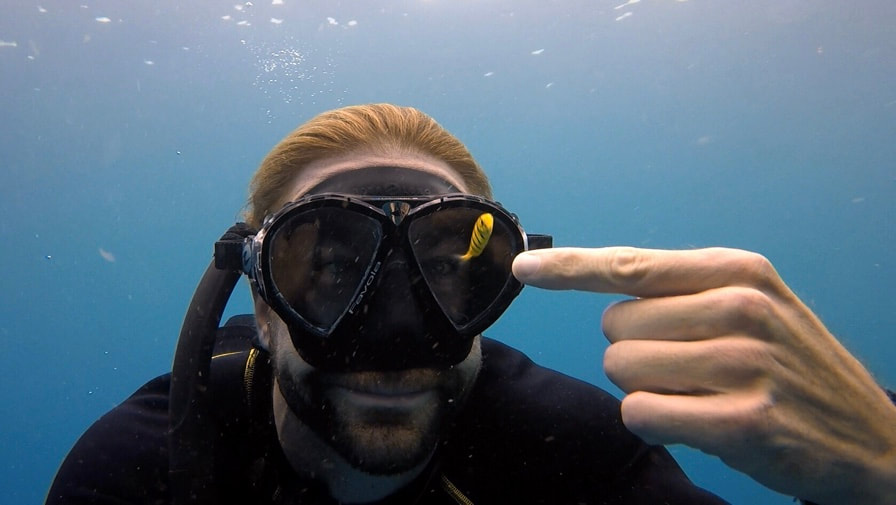




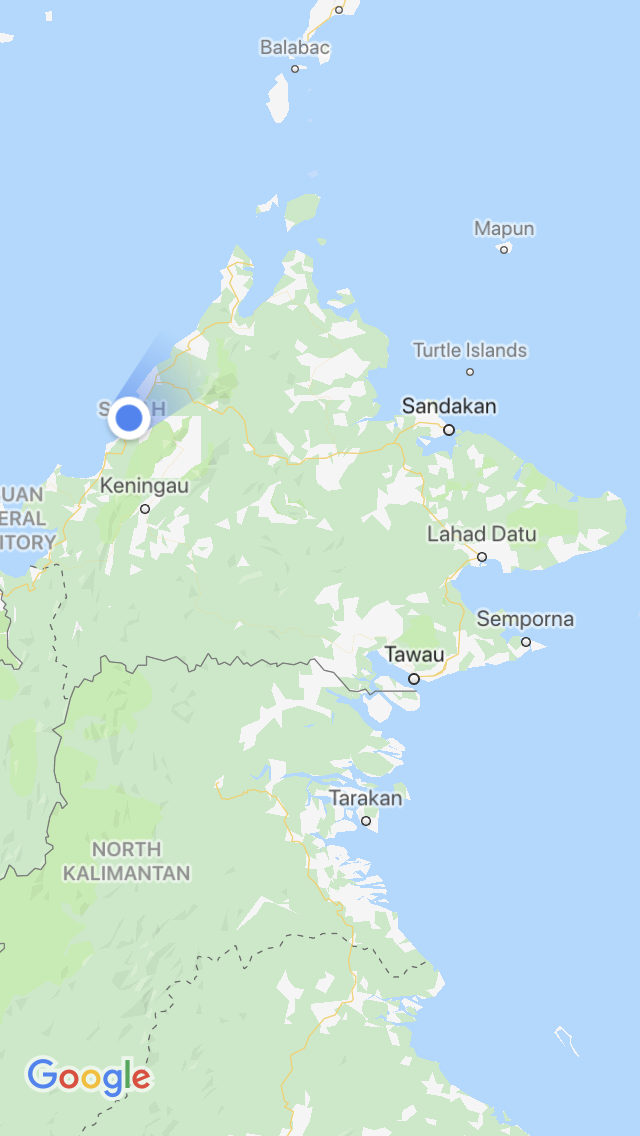

 RSS Feed
RSS Feed 









